Prologue
This is my first entry in the blog around avian focussed tour. I have not felt the need to document one since these trips are typically not solo-able and needs proper guidance. However this was the very first trip where I strongly felt the urge to document. This is primarily because of the sheer difficulty in the terrain and unfamiliarity of most citizens around this part of the country.
This trip was organized by Avian Trips Group, with whom I have been travelling a lot post pandemic. The team was of 4 members, led by the Avian Trip tour leader Dilip. Joining the team was one bird guide Micah and 2 Mahindra Xylo cars with their respective drivers.
Table Of Contents
Day Zero Day One Day Two Day Three Day Four Day Five Day Six Day Seven Day Eight Day Nine Day Ten Day 0
I chose to check in a day early on 6th April (Thursday) since my day job is remote and all I need is laptop and internet. So an early morning Air India flight from Kolkata to Guwahati landed me at Guwahati terminal by 7 AM. As I did exit the airport gates, the usual barrage of taxis and rickshaws flocked in. The rate is 100 INR from terminal door and ironically, if one just crosses the airport entrance gate, that price plummets to 30 INR. Guwahati airport serves as the primary checkpoint for all 7 sister states (Dibrugarh being the other major point, also in Assam).
After walking for 600 odd meters through the airport main road, I reached my stay – Hotel Mirana . I had arranged an an early check in option by going up to INR 2500 per room (from the usual INR 1800) over telephonic booking.
The room given on second floor was spacious, comfortable and well maintained. The food menu was tad bit on pricier side, but it had dinner availability via room service till available till 10.30 PM. Food taste was surprisingly nice and they offered a generous number of choices. My biggest issue was the weak WIFI, to the point that the speed was unusable and the connection kept constantly dropping.
Day 1
Our day began at 7.30 AM as we made our way to the great dump yard of Guwahati, in search of the endangered Greater Adjutant bird. This landfill was crushed by huge machines to create compost which was astonishingly stench free, despite the massive area it covered.
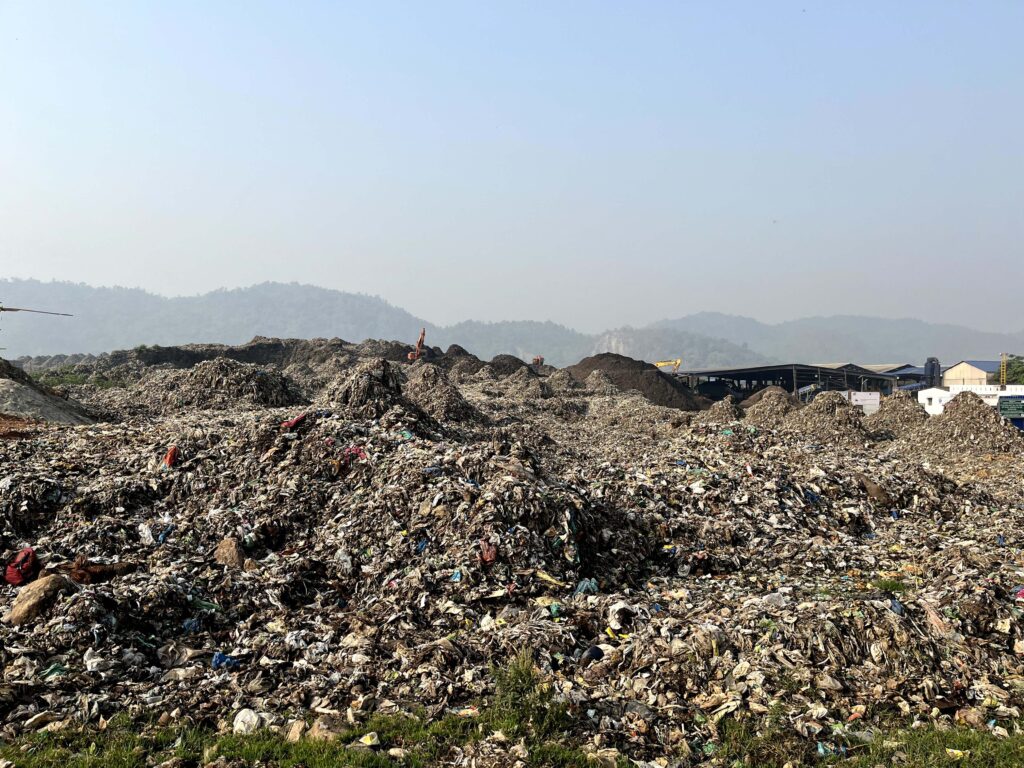
After spending couple of hours in the landfill, we set off to our original destination of Arunachal. But first, we stopped for breakfast at a roadside Dhaba called Delight. Hotel Delight was not that delightful with it’s super limited food menu. A quick meal of tea with roti-sabzi helped us continue ahead and brace the 7 hour long drive.
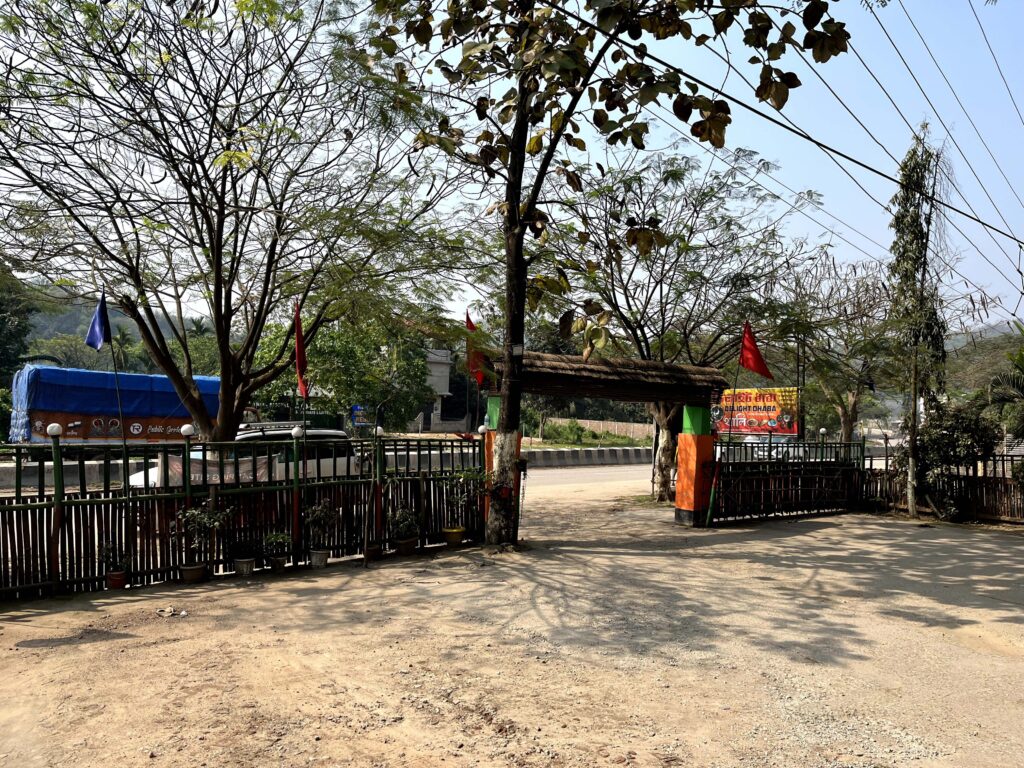
Our vehicles traversed the National Highway route through the centre of Assam, going straight up to Kaziranga National Park. Then we took a sharp left bend and bridged across the Brahmaputra river, which was surprisingly pretty dried up.
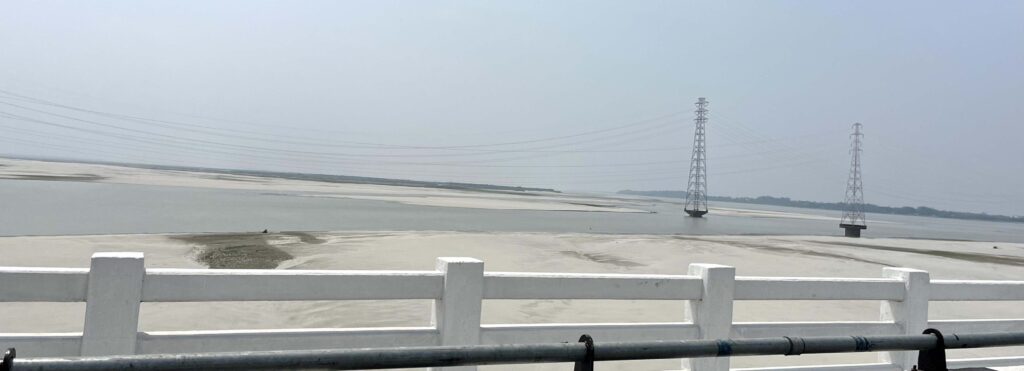
We exited Assam through Tezpur as we entered Arunachal finally. The process of entry requires a pre-approved permit at the border, which is heavily guarded my Indian Armed Forces.
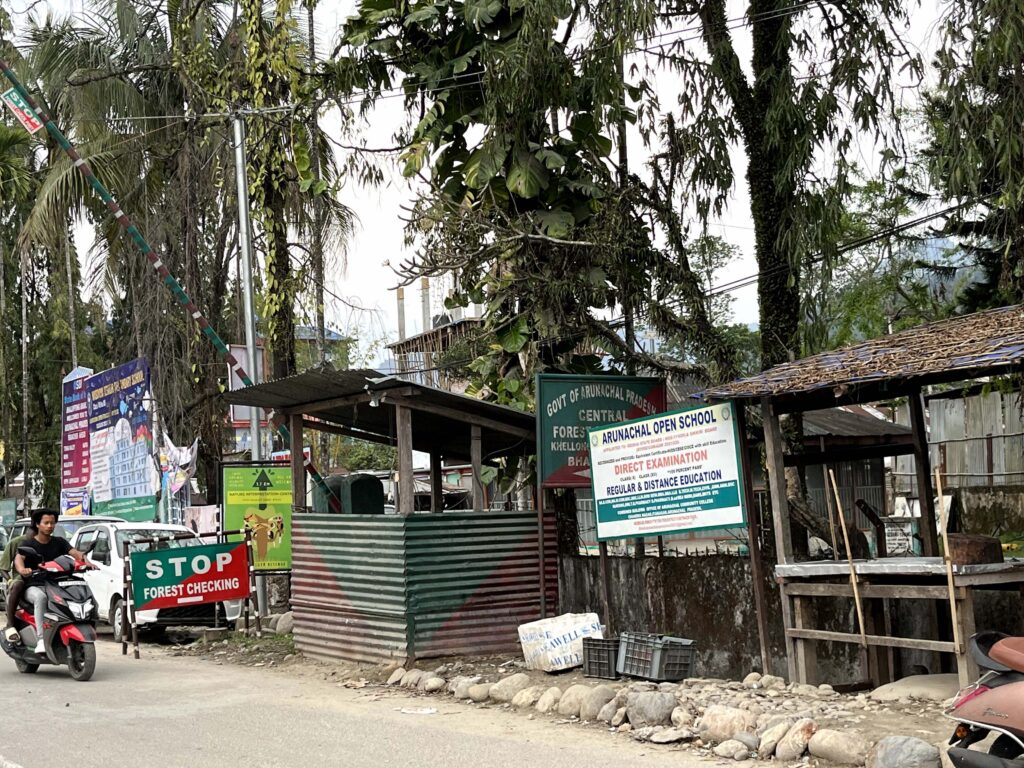
As soon as we entered the other side, our drivers decided to stop for lunch, at yet another Dhaba. Marching ahead, they drove non stop to reach the Lama camp, where we retired for the night.
Day 2
Now experiencing the night at Lama camp, was excruciating, to the say the least. The temperature can drop so low here that the cold penetrates the sleeping quilts at night. Our hands went numb thanks to the tap water which feels like molten ice. The cold gives a much needed jolt for the upcoming experience at the land of Arunachal.
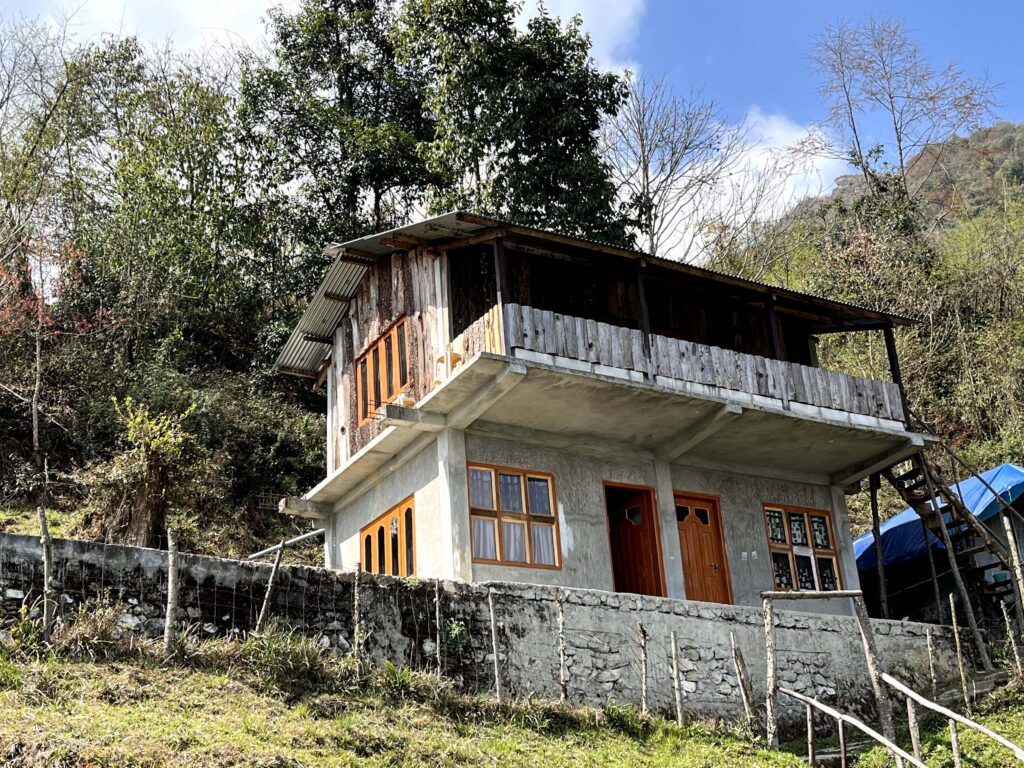
But with sunlight, comes the appreciation of the beauty of the place. We were up and ready by 5 AM for our first session and the temperature begins to normalise with the luminosity of pure sunlight pouring in.
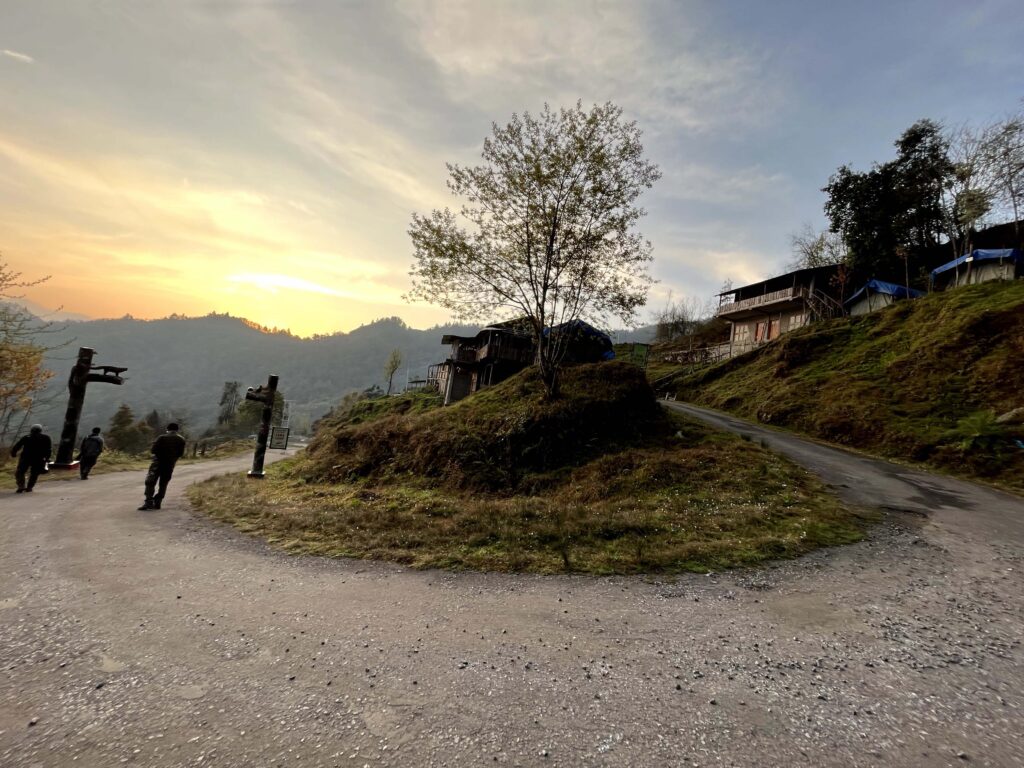
The setup at Lama camp is not very well suited for folks of the plain like me, for whom this often proves to be a new way of life. The stairs to the tent were wobbly and uneven. The rooms was completely made of wood with tin roofs that help combat rainfall, with an occasional spider or moth making way through the door crevices.
The camp houses only one singular solar-powered light source, placed in each cabin room as a LED night light. All the charging of phones and camera have to be done in the common dining area. The food being served three times a day here, was extremely tasty and filling.
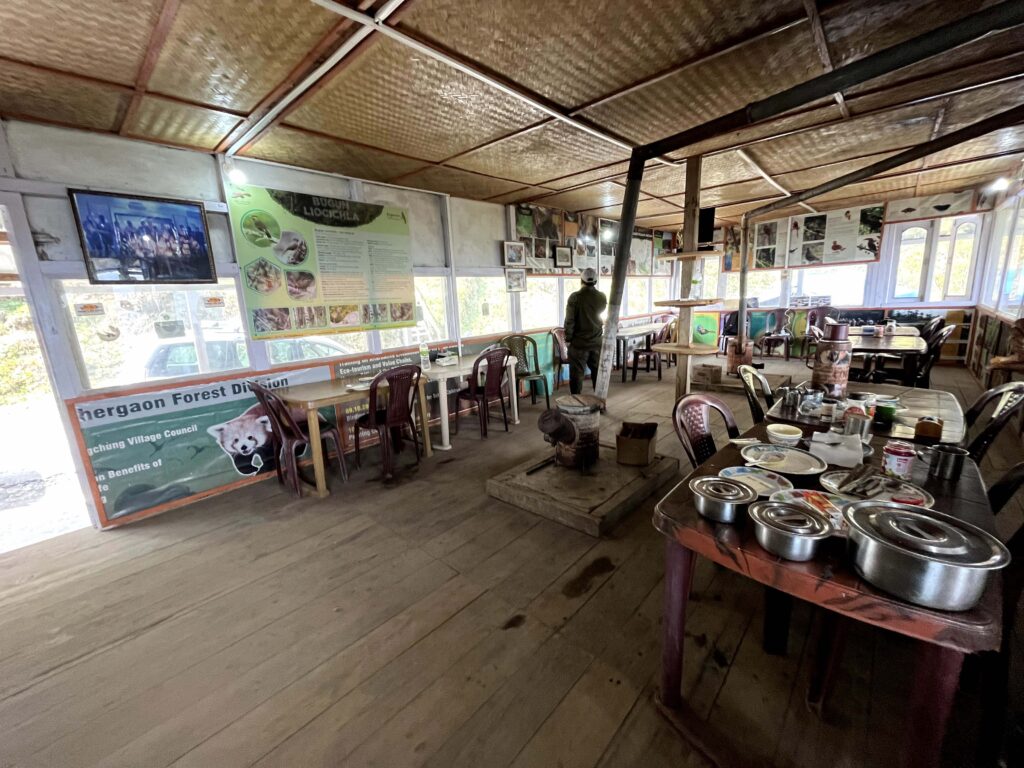
Our birding involved driving to areas where our guide had reported sighting, and then walking on rocky terrains through lush forests. Wildlife is aplenty here, one of the densest biodiverse areas India has to offer, but spotting can be challenging in such massive trees and undergrowth.

A major target for anyone travelling to Eaglenest is a bird called Bugun Leochicla. Conservative estimates say that less than 250 mature individuals exist in the wild but no more than 14 individuals were confidently tracked in a day.
We even met Ramana Athreya, an eminent birdwatcher and astronomer, who first described the species in 2006. Thus, making it the first discovered new bird species of independent India. The Bugun tribe protects this birding sanctuary, who has also been honoured by naming the species after the native folks and thus in turn, being protector of this critically endangered shy bird.
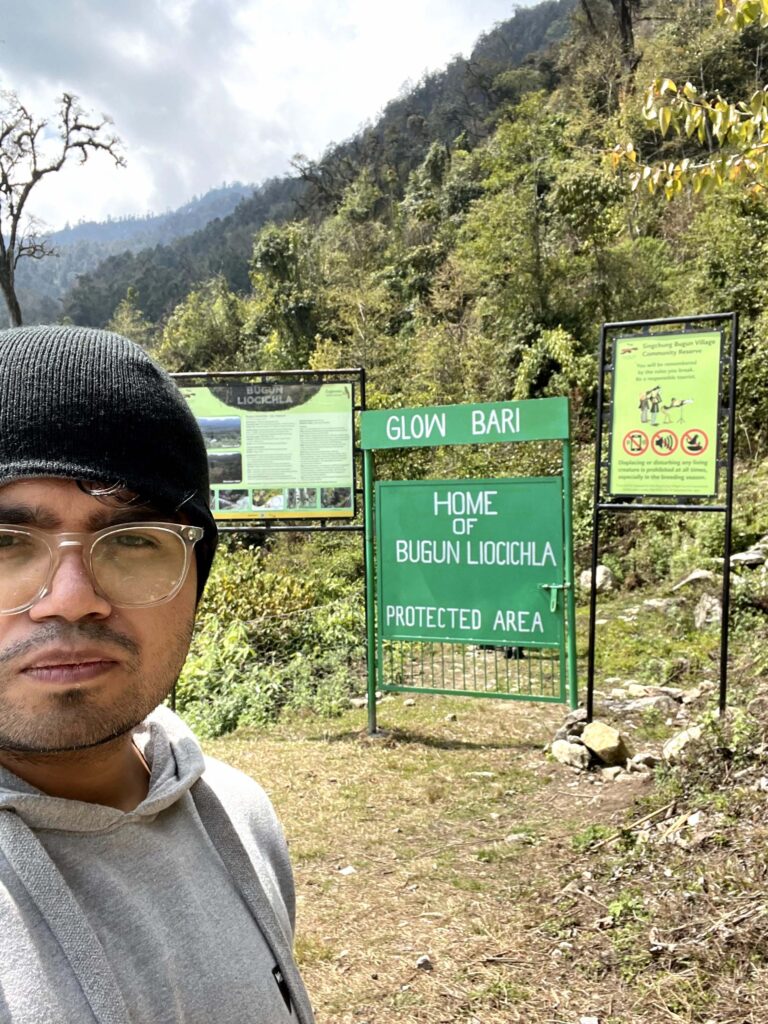
The main sanctuary terrain is relatively easy to traverse and since Bugun Leochicla flies in mixed flock with other species, bird guides usually track those other birds to spot one. Our guide managed to hear calls far ahead from such a mixed flock, which we could not.
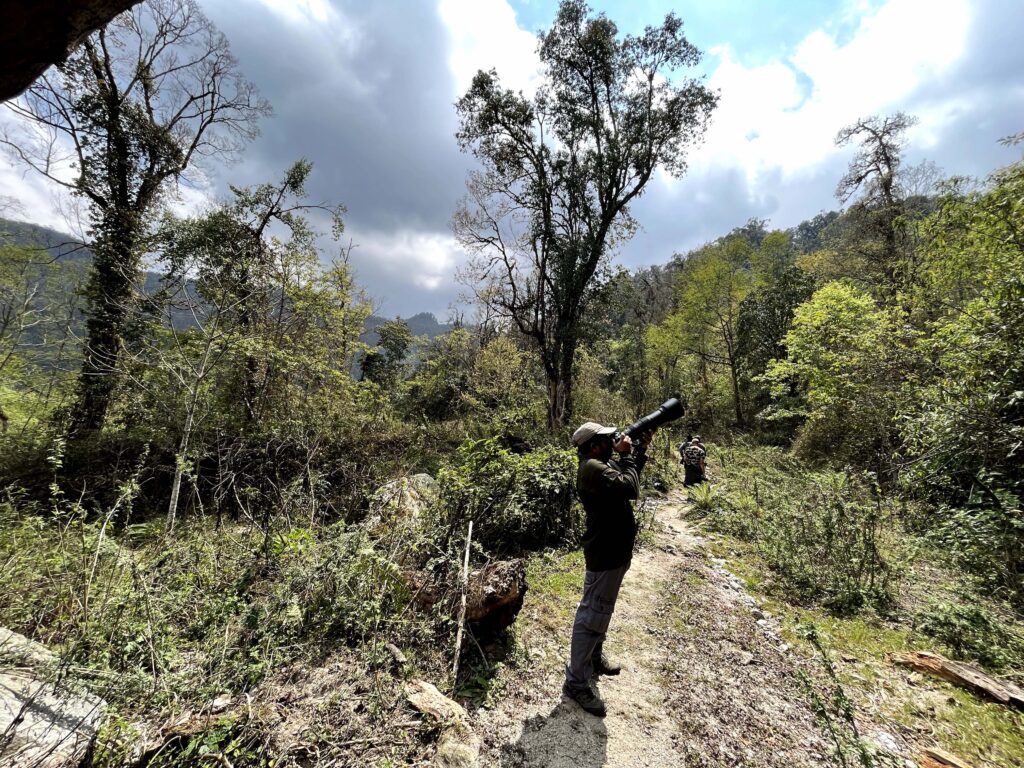
He followed that sound and took us uphill through the dense forest. This activity involved a lot of manoeuvring, poking branches and very unpleasant burns from Indian stinging nettle plants.
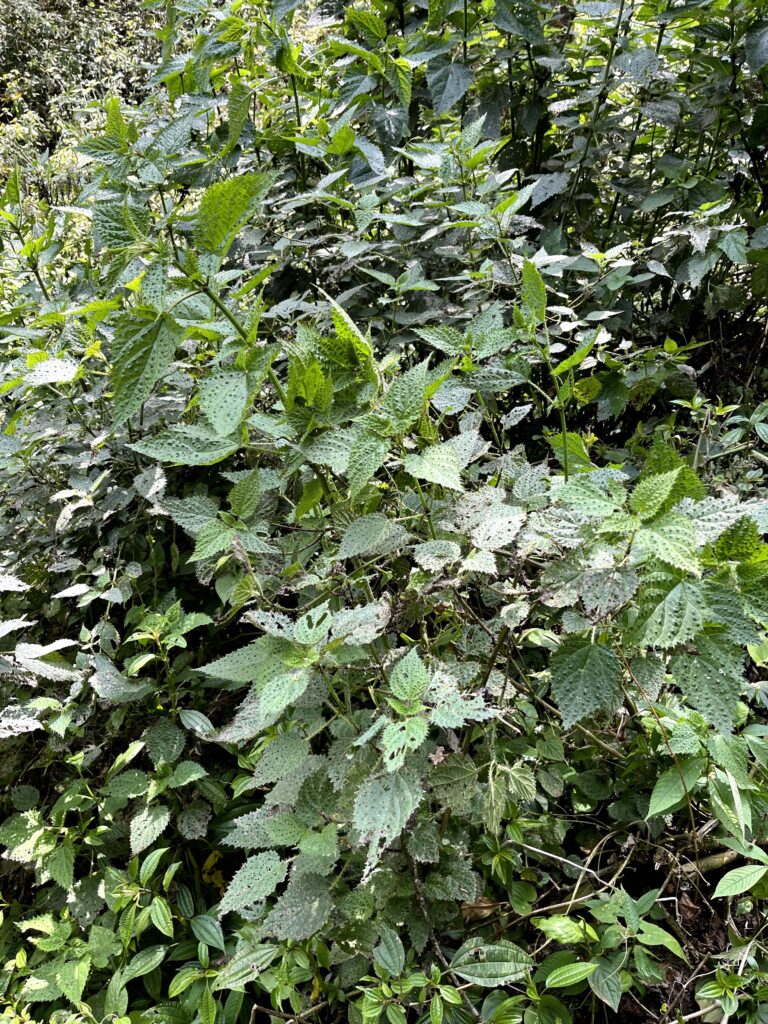
Nearly all of us got stung somewhere in the process, but we were spared from leech onslaught due to no rainfall in the past few days.
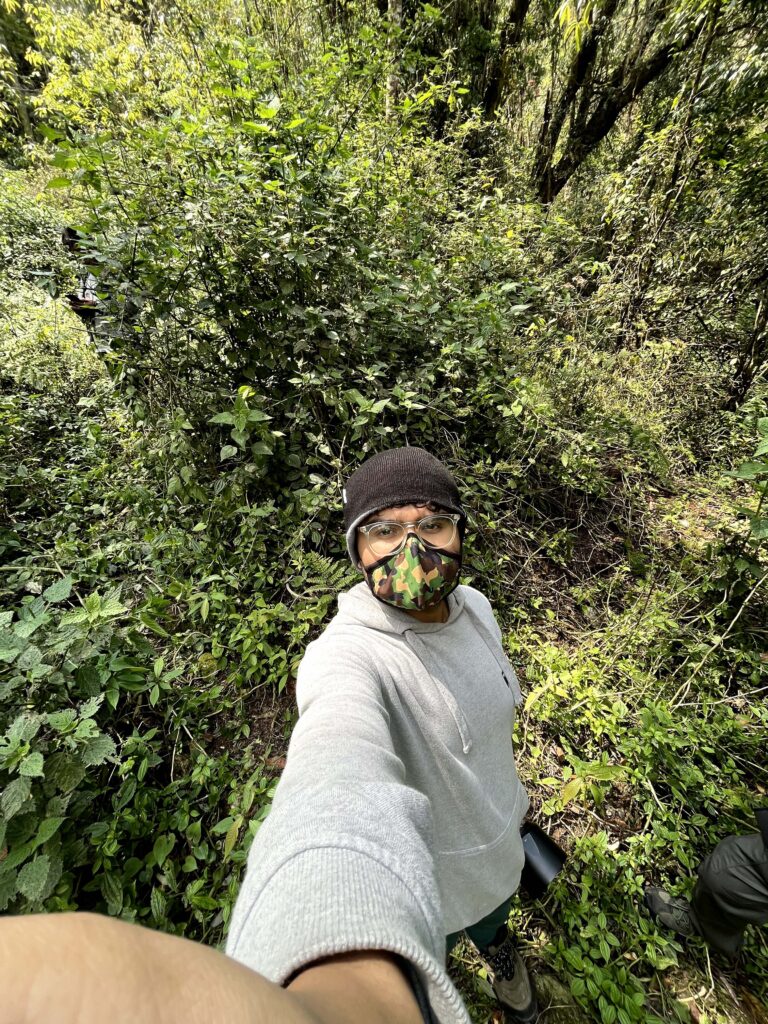
Post a rather unsuccessful session, we drove up to reach the Eaglenest pass. This pass is a patch of forest inside shroud of mist, located at 9000+ feet. This is where we descended to find the elusive Temminck’s tragopan.
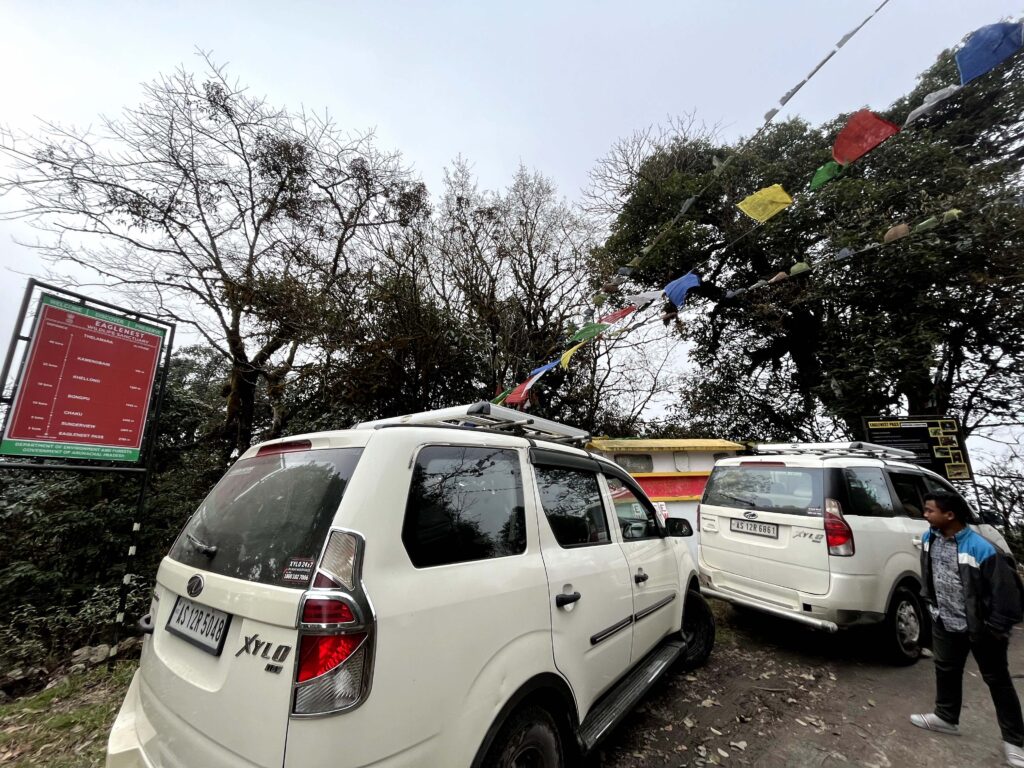
After patiently positioning ourselves for an hour, darkness kept setting in. With luck against our side, we called it a day and descended ahead to the next camp through some bumpy roads, where we will spend the next couple of days.
Day 3
Our day started around the tents on Bompu camp, which was at much lower elevation than Lama. Despite having similar facilities, the cold is extremely bearable. Just outside the camp trail, we found the elusive Sikkim wedge-billed babbler, a recently rediscovered species which was thought to be extinct few years ago.
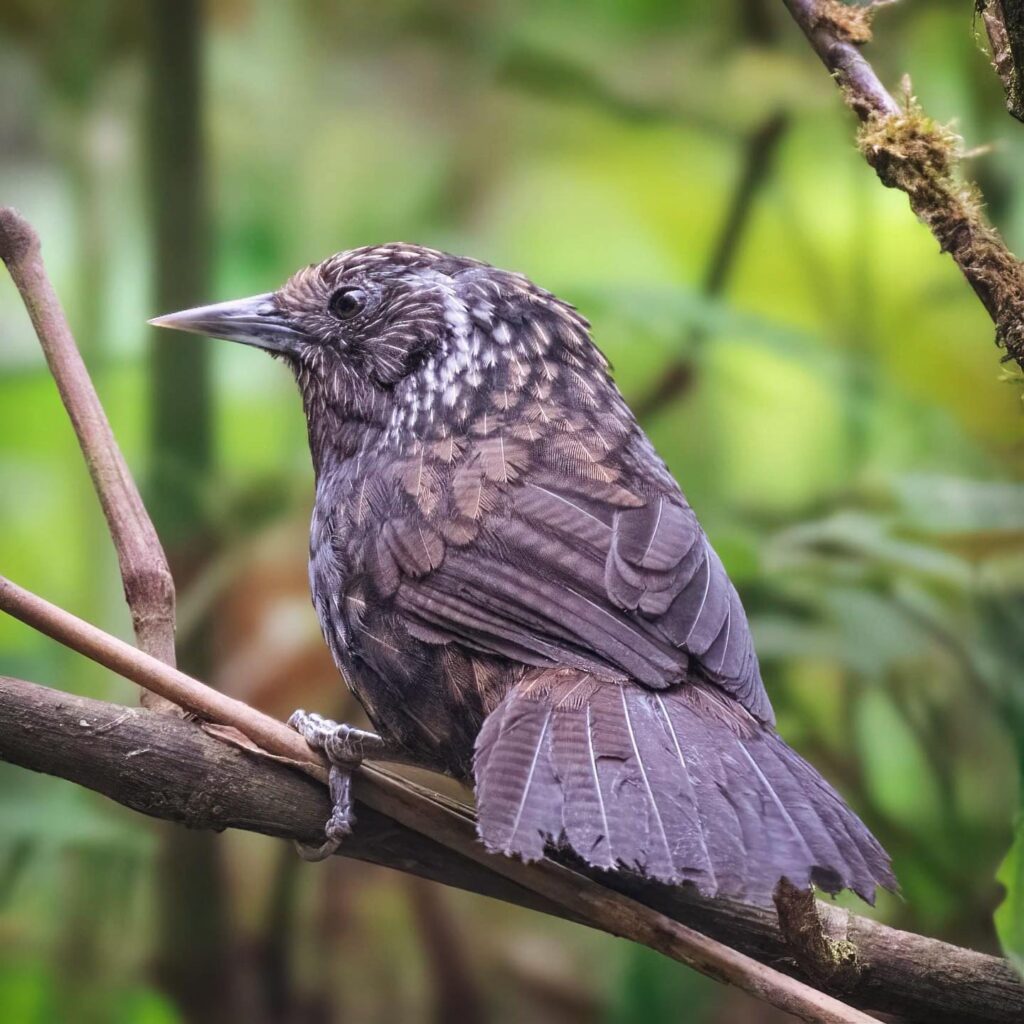
Then, we made our way to Kehllong, which was at a much lower elevation. The weather had starting warming up across the flat forest valleys.
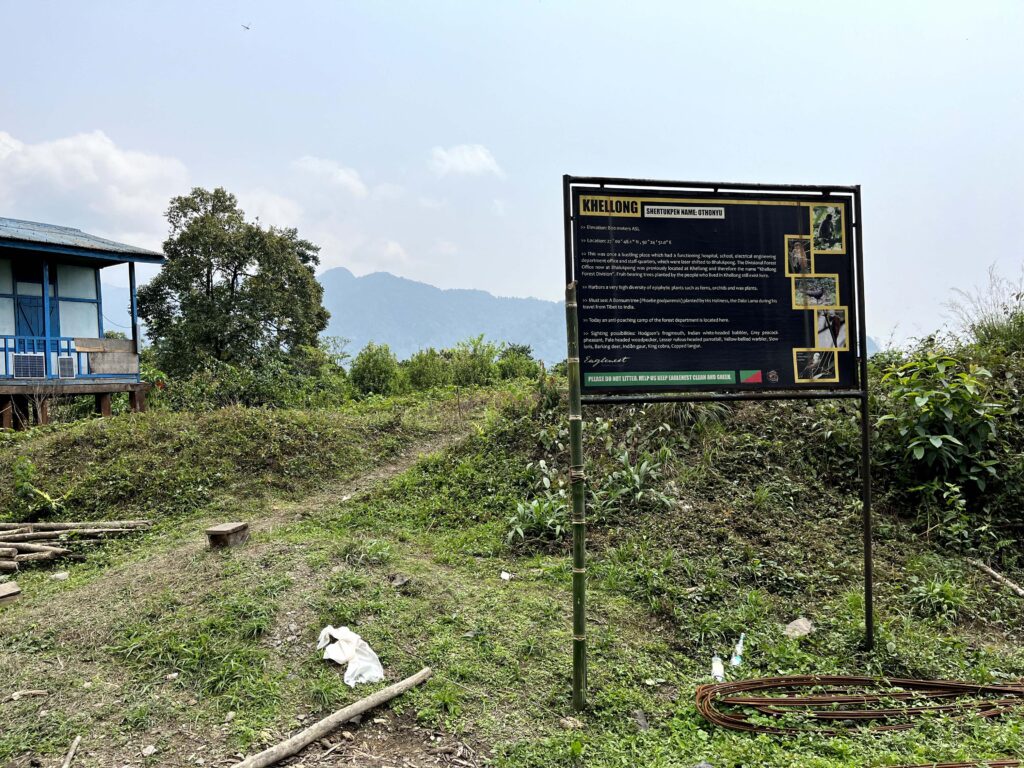
The end of Khellong is marked by a very prominent army check post., housing broken beds and empty rooms. Here, travellers can rest and avail basic bathroom facilities.
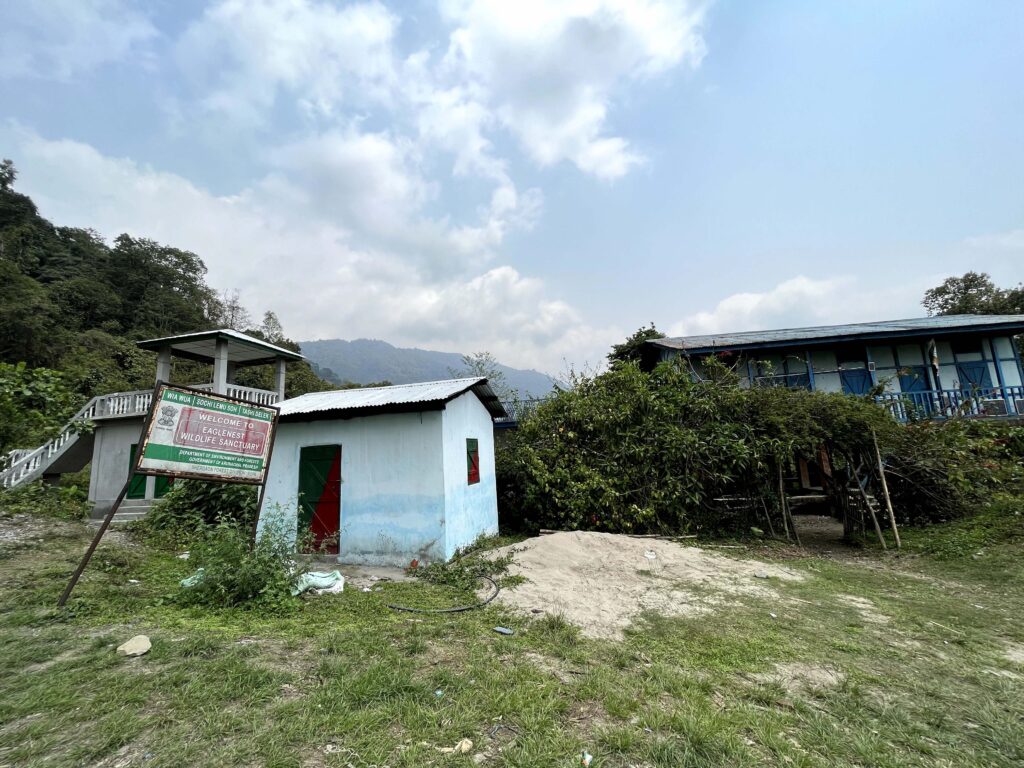
The trail leads to a Buddhist shrine in the middle of jungle.
Around it, we encountered many trees being uprooted and planks (most likely illegally) were being made out of it, leading to major habitat destruction. One of our highlight encounter was a beautiful Red headed Trogon on this trail.
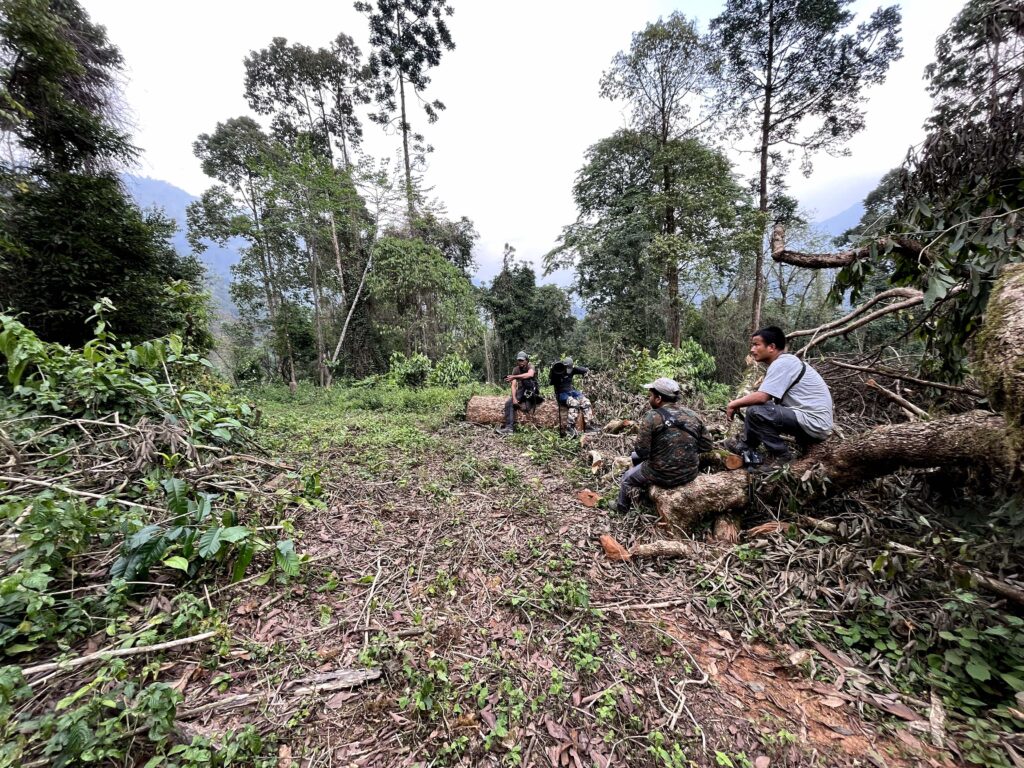
Day 4
Our next night was spent in Bompu camp, which encompasses a much larger expanse than previous camp. Fundamentally a trail of makeshift tents and common bathrooms, this camp boasts of being eco friendly with minimal impact on habitat loss.
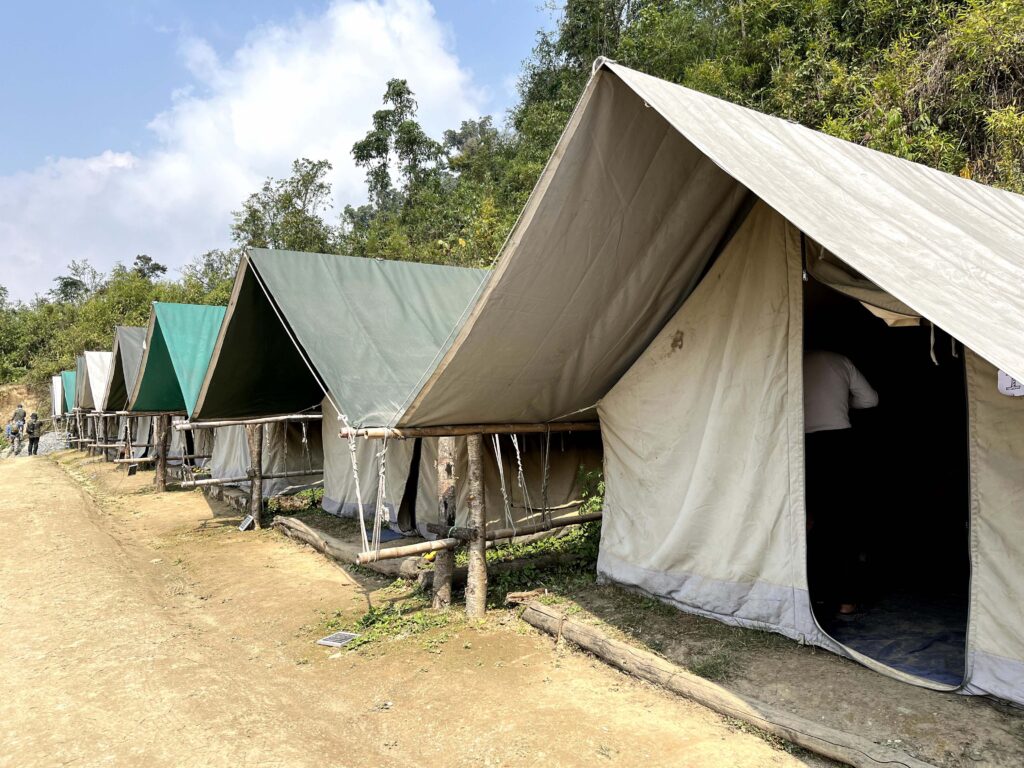
However unlike the previous camp, this place had nearly no internet connectivity and very spotty cellular network. There is a patch in the centre of the camp to host fireplace and arrange picnic for trekkers.
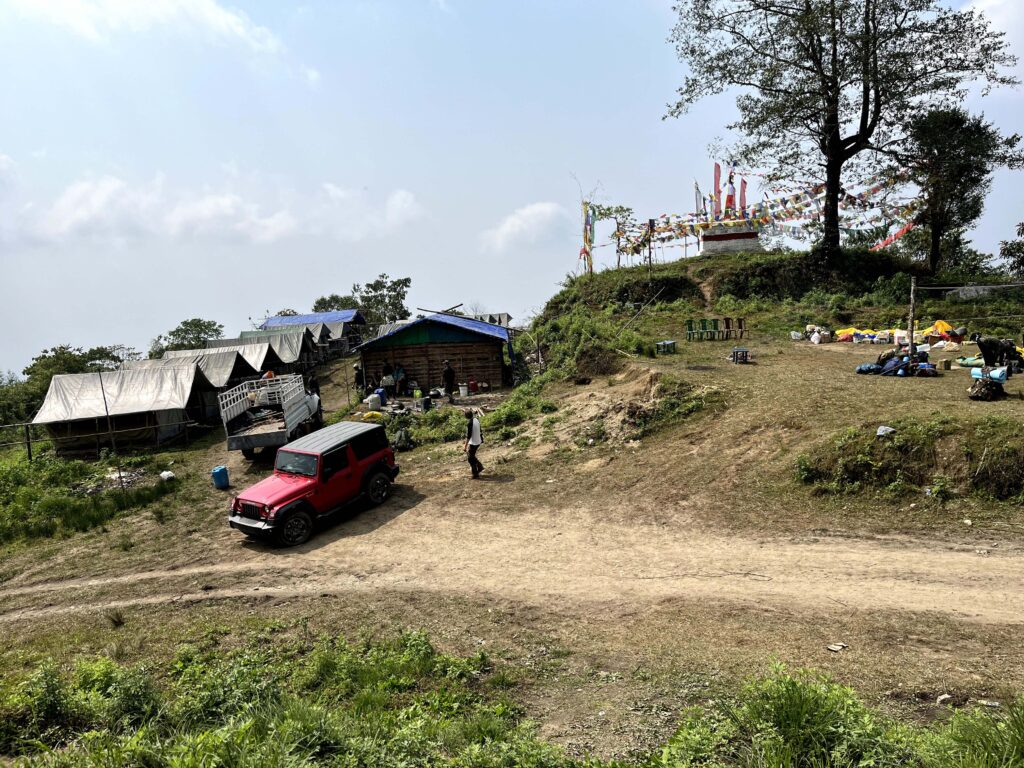
Similar to Lama, the tent facility had solar powered light source and the common wooden house had dining/charging option. However the charging time here is restricted between 7 PM to 10 PM.
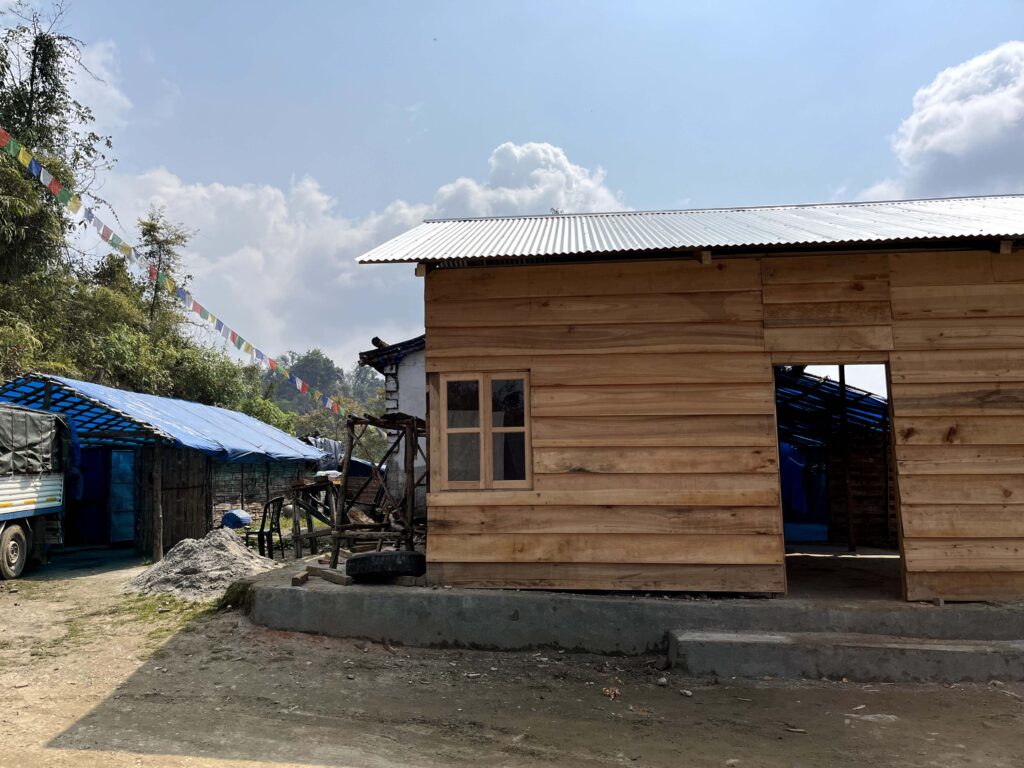
The food quality in the camp was as good as Lama. Here also, they pack in the breakfast and lunch for birders, who prefers leaving at break of dawn for their expedition. The menu item ranged between fried rice, egg omelette, puri-bhaji, paneer and different spreads of green veggies.
Day 5
As our time to bid adieu came, we decided to follow the same trail back to Lama to have another shot at the elusive tragopan of Eaglenest pass.
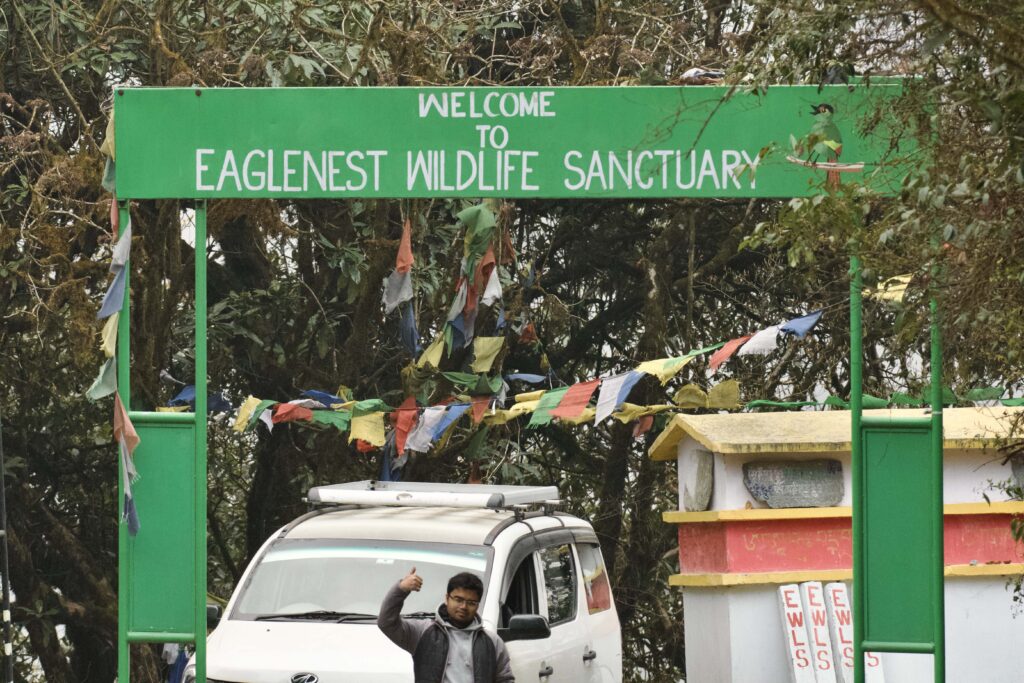
However first, we had to see the Ward’s Trogon family. Our guide took us to a giant valley full of canopies where we had the chance to encounter two males and one female of this vulnerable species.

After an yet another unsuccessful attempt at Tragopan (Blyth’s is found at lower altitude) at Sunderview, we reached back Lama camp by 7 PM. The cold was much more bearable this time around, possibly due to my psychological preparedness or lack of strong wind, which is hard to tell.
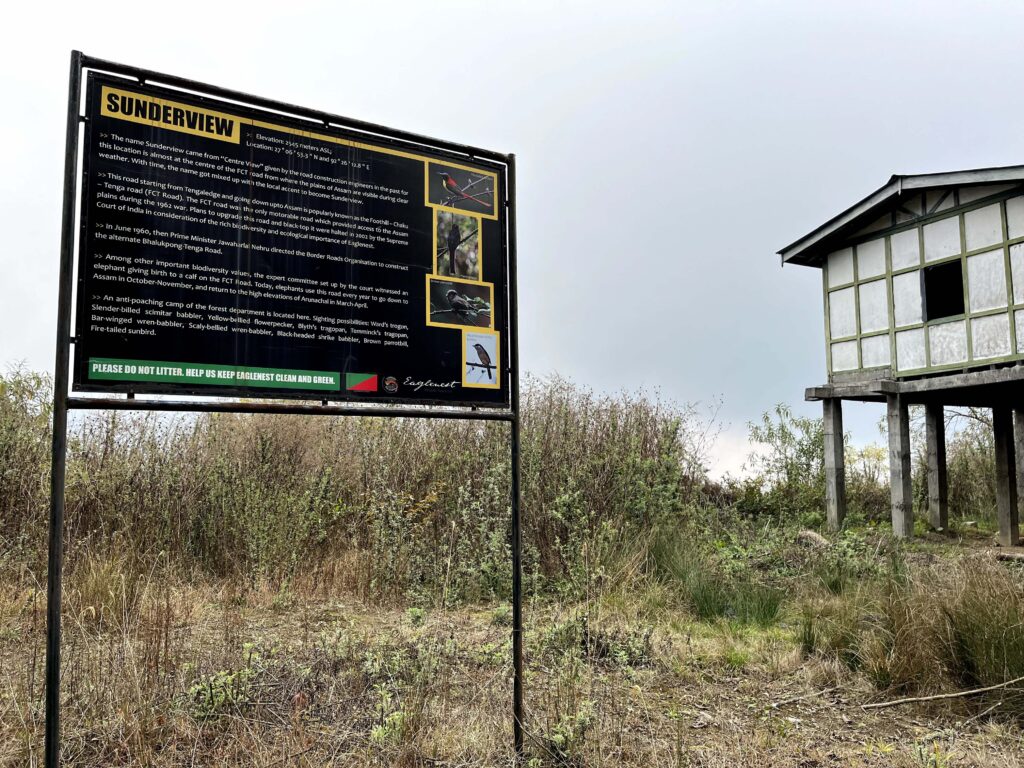
However we did give an attempt for Hodgson frogmouth on a night birding session. Despite hearing it’s calls, the bird never came out in the open. We were instead rewarded by a view of dense starry sky, devoid of any light pollution or rain clouds, that is rare to come by.
Day 6
Our next morning started with yet another attempt for Bugun Leochicla in the core sanctuary area. We got greeted by herd of Mithuns, the state animal of Arunachal which belongs to bovine family. We were told that this cattle breed are not reared for milk, but for meat; as a gift from groom’s side to feast upon, in local tribal weddings.
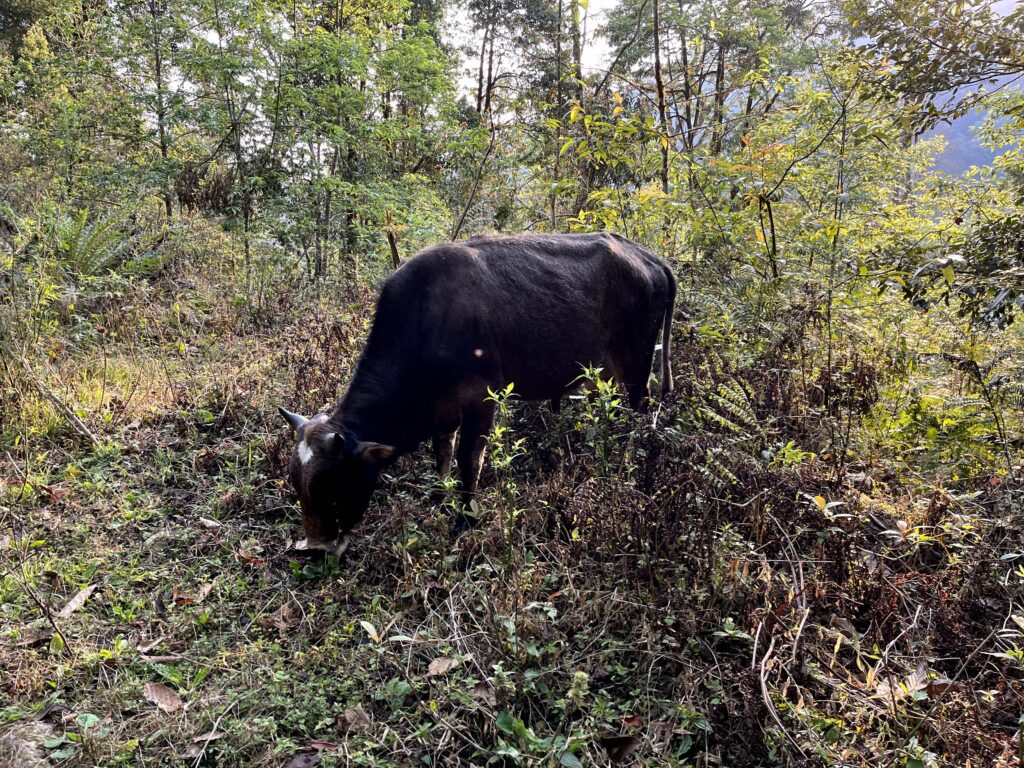
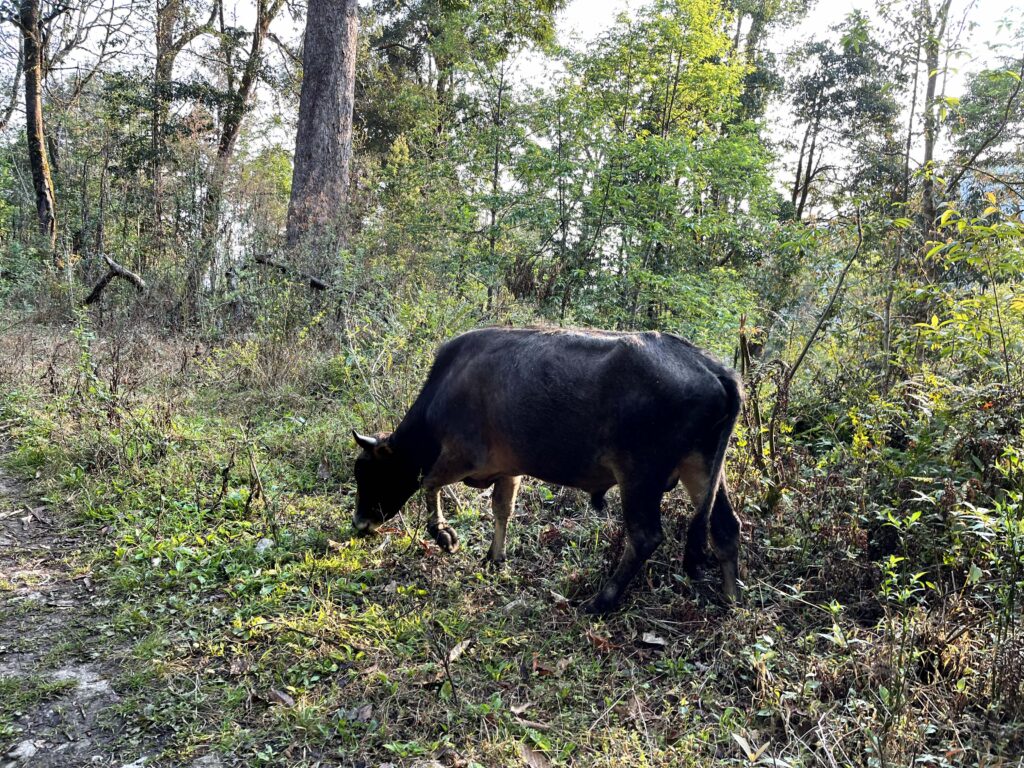
Heartbroken at no sight of target species, we moved to the lowest elevation of Dirang valley. An evening in Dirang, flanked by mountains on all sides, can be a site to behold.
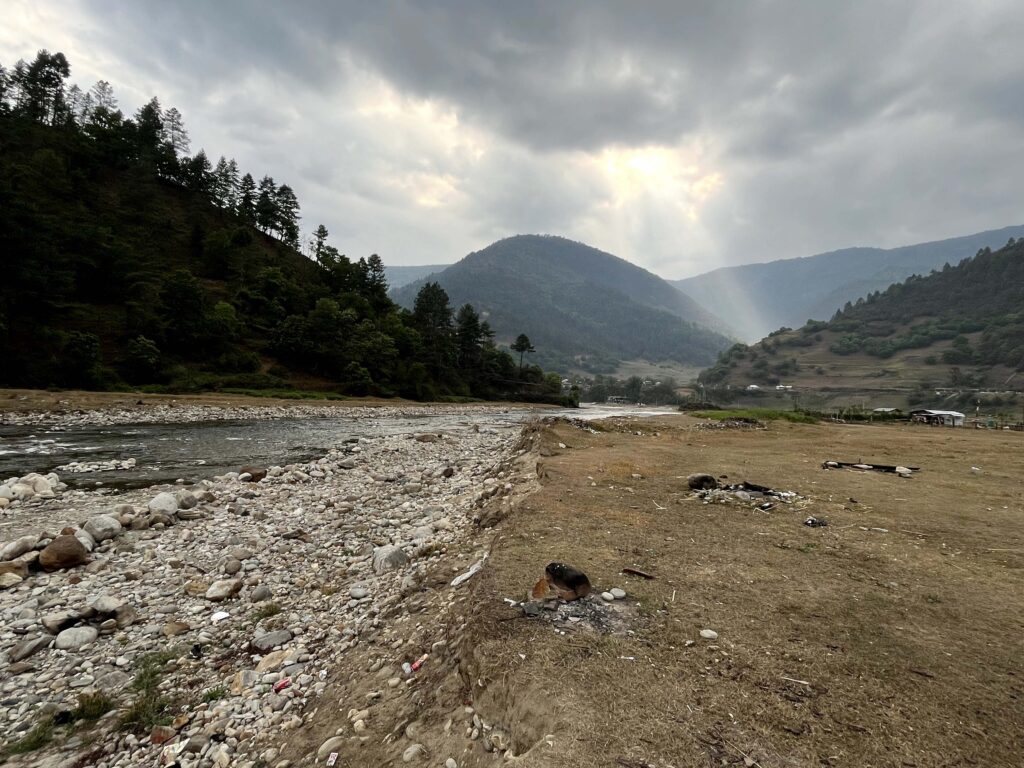
Unlike our previous spots, the valley feels very comfortable with smooth roads, regular homestays and hotels, local markets and food shops. This is why Dirang is coming up as a popular tourist destination of Arunachal.
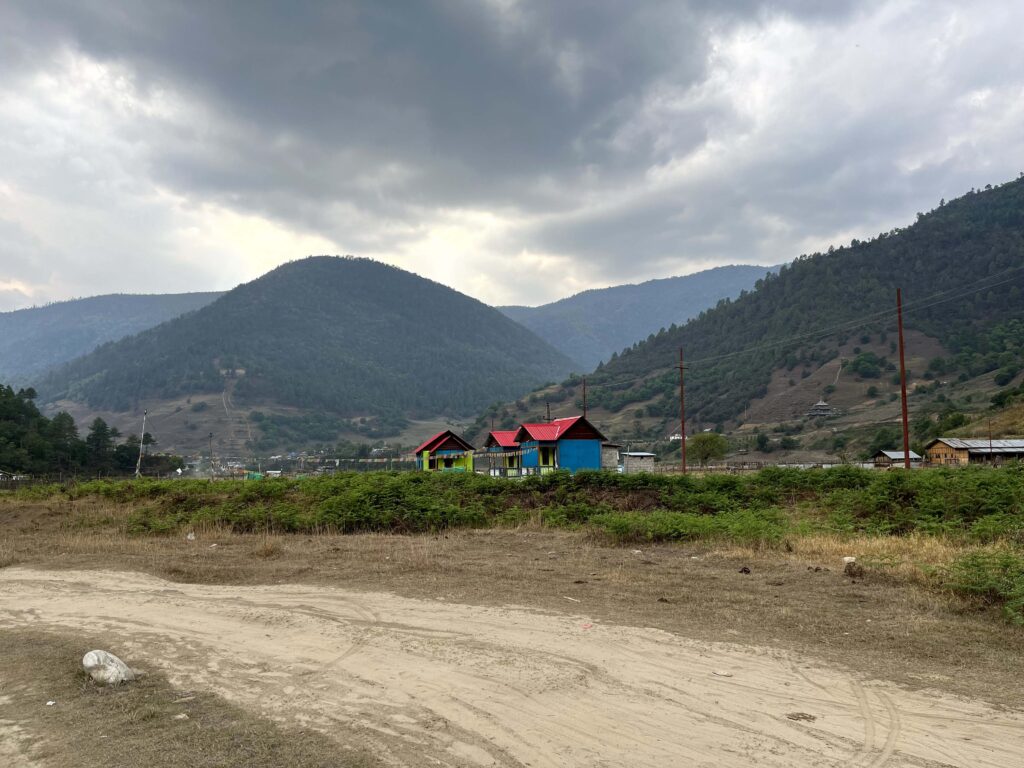
The river Kameng is wide and flows through the heart of the valley in all it’s white glory.
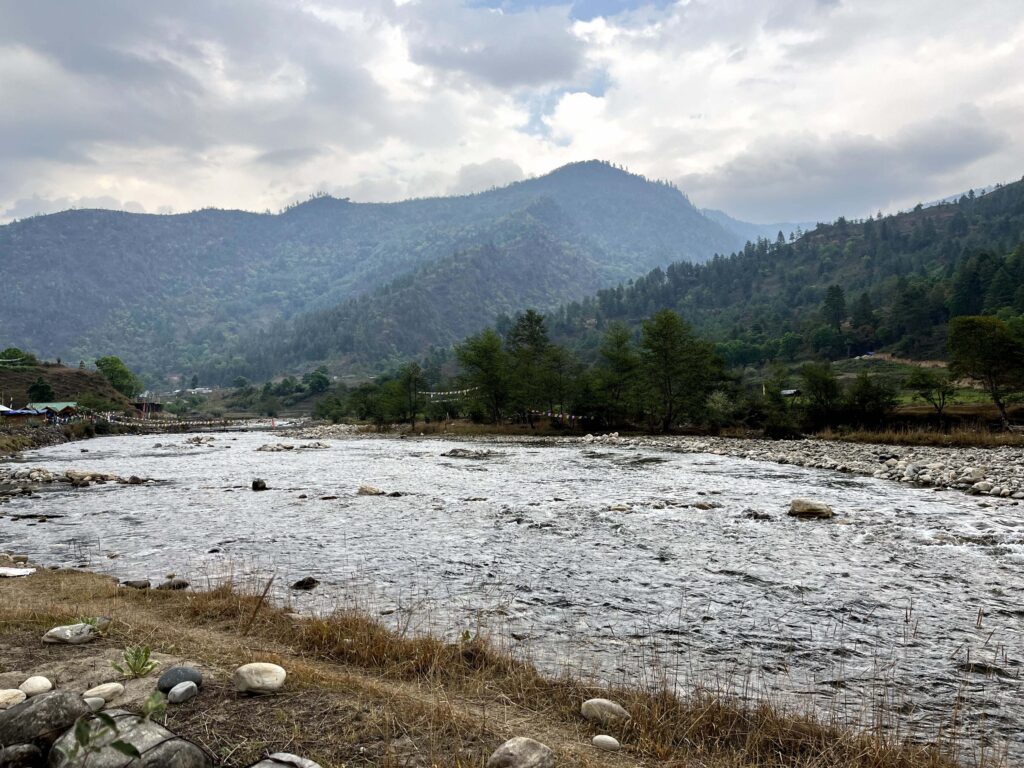
A regular tourist will find having the option to stay on the river bed a great relaxation opportunity.
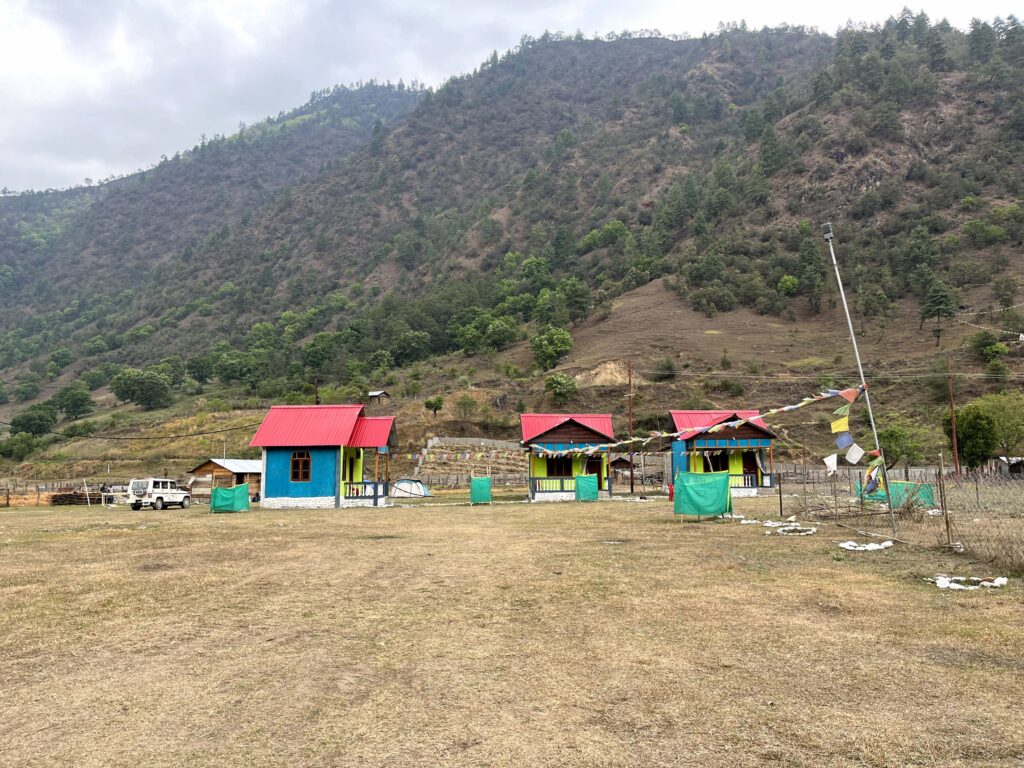
However we had to choose more strategic location, which is why we stayed at Mondruk Homestay, up near Dirang market.
Day 7
Here is what I will call the post-interval point of this trip. The day required us to get up at 2 AM as we made our way to the highest point yet. Sela pass was 14000 feet up in the snowy peaks.
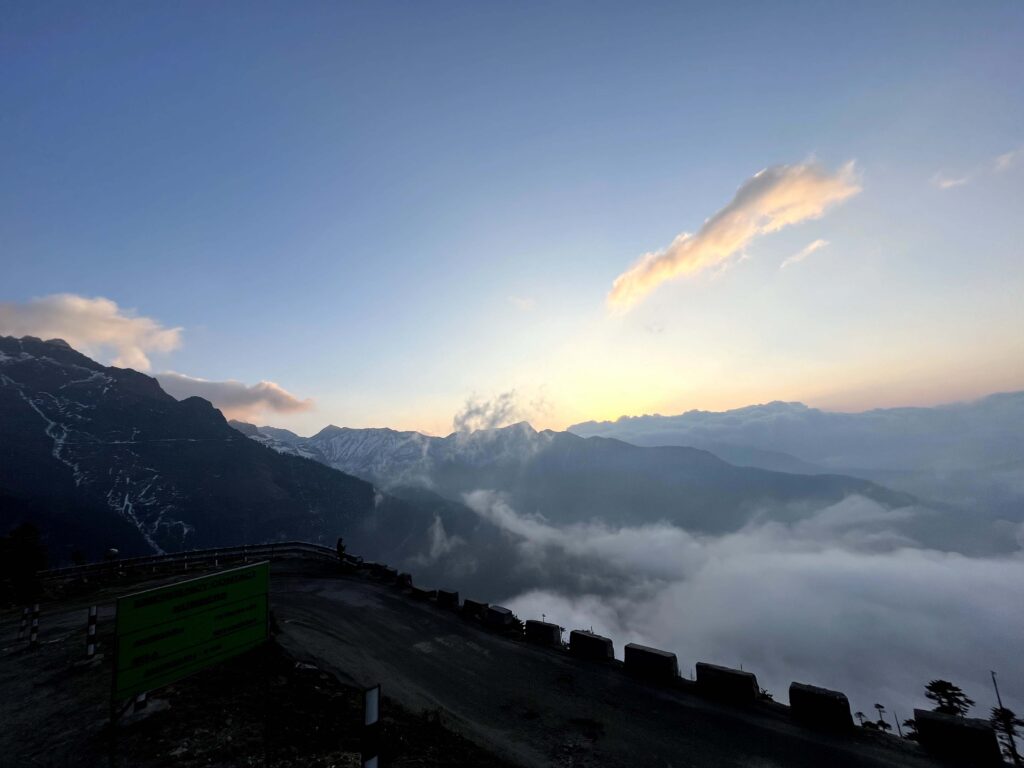
Sela Pass has a massive entrance gateway, since this entire stretch is an army basecamp, a village and a tourist spot, all at the same time.
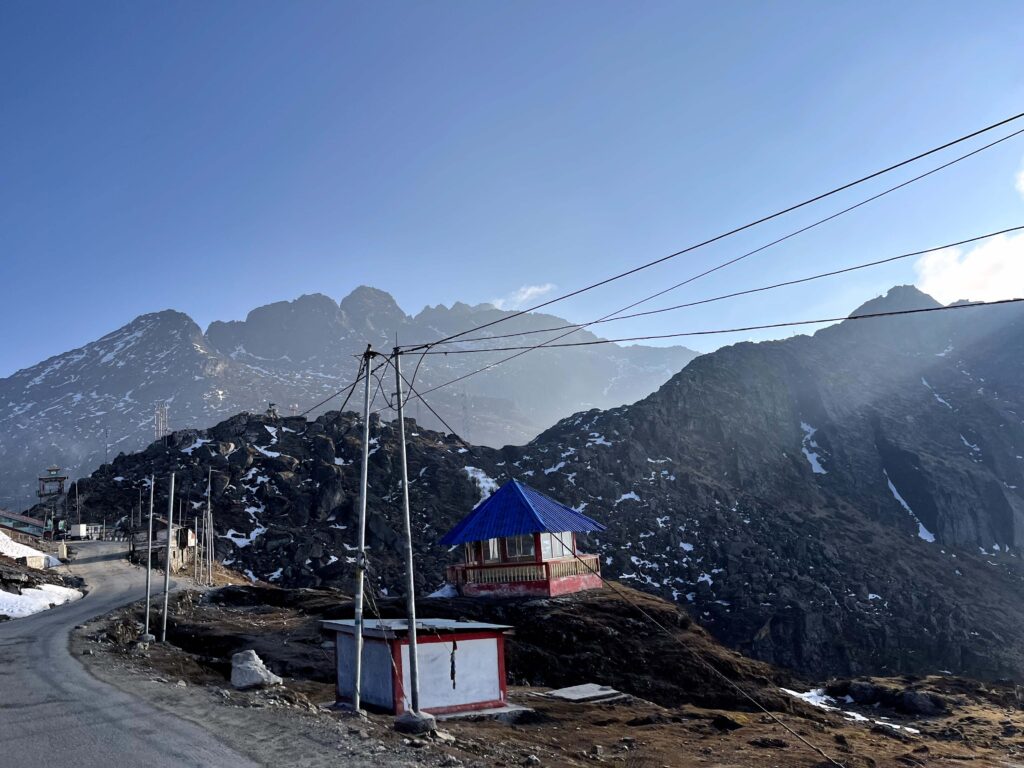
Our luck shone as we figured that the night before had fresh coat of snowfall. This not only made the visuals more dazzling to look at but also this meant our snowy birds will feel comfortable coming closer to human settlement.
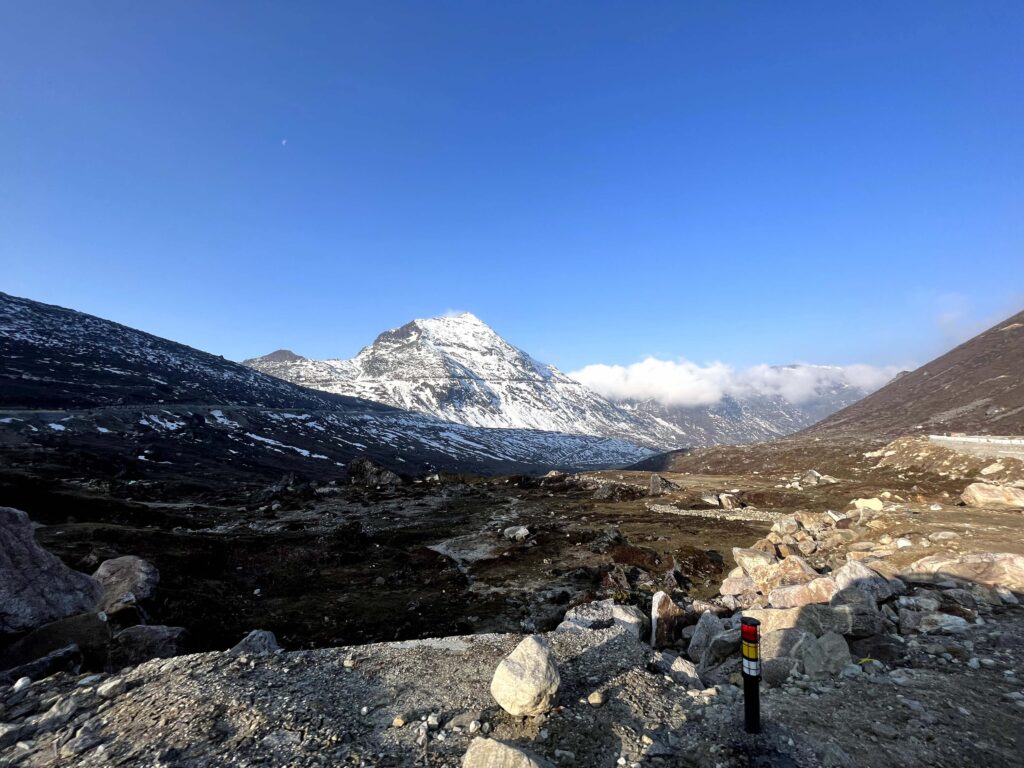
The entire panorama is surrounded by gorgeous snow capped terrains and icy water expanses. Tibetian Buddhism believes there are 101 sacred lakes in and around the pass, making it a site of religious importance.
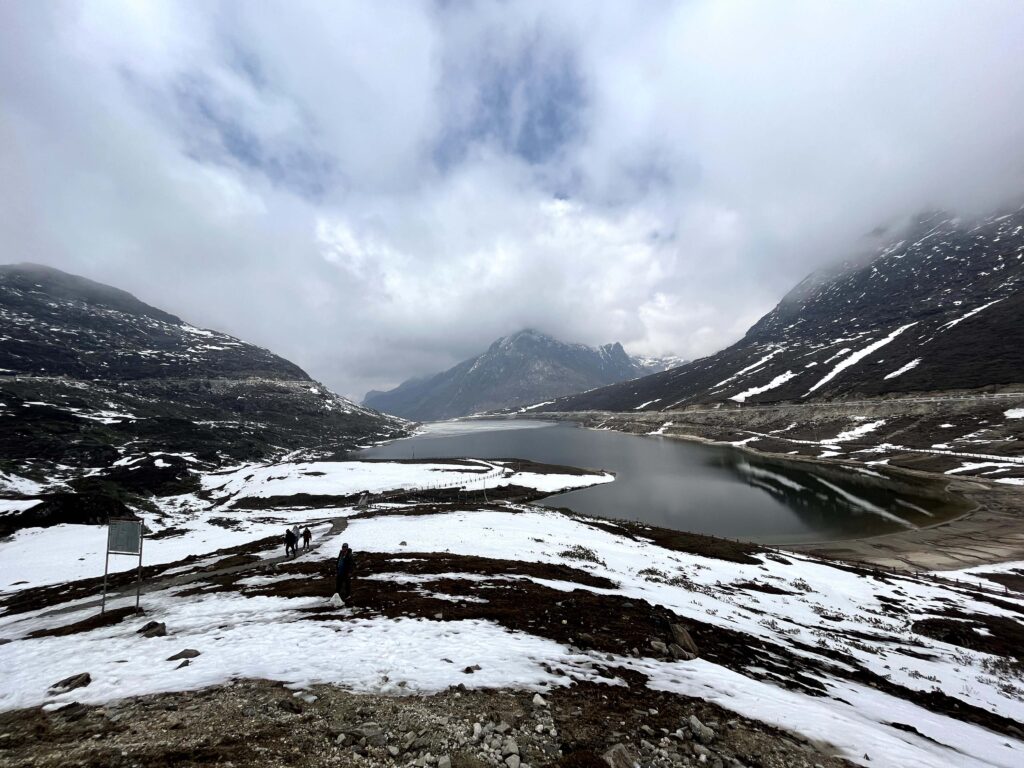
The road on the pass itself was smooth and wide thanks to the Indian army. In the past the pass had played pivotal role during Sino-Indian war.
The lake was covered almost entirely by a thin sheet of ice. Surprisingly atop the very few sections of water where the ice had melted, common shelducks sprawled which I had previously encountered in the arid terrain of Kutchh.
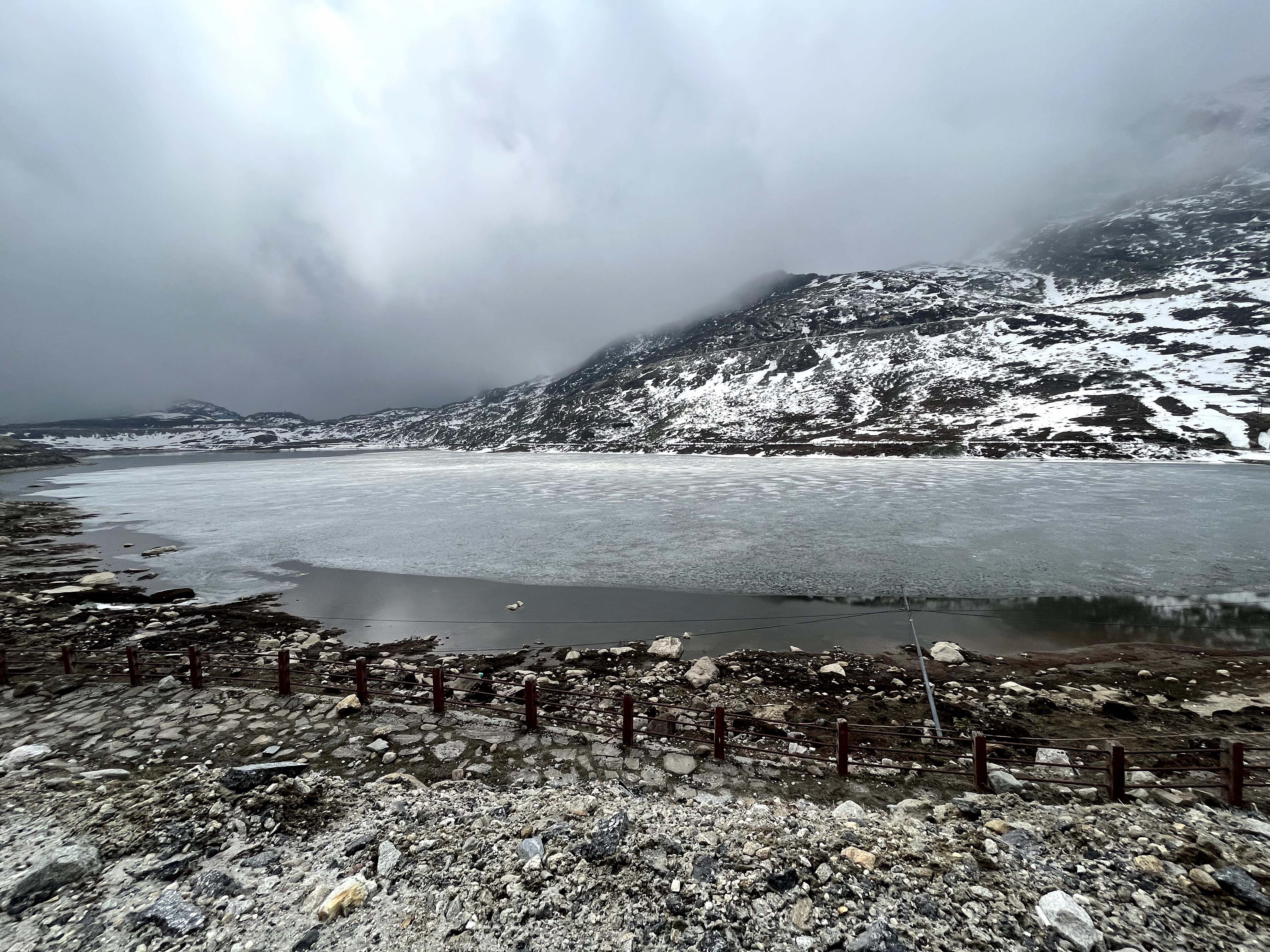
As we trekked on the mountain slopes, our feet fell into deep into the snow. This was an usual day at Sela since we saw many tourists taking advantage of the same and hurling into impromptu snowball fight.
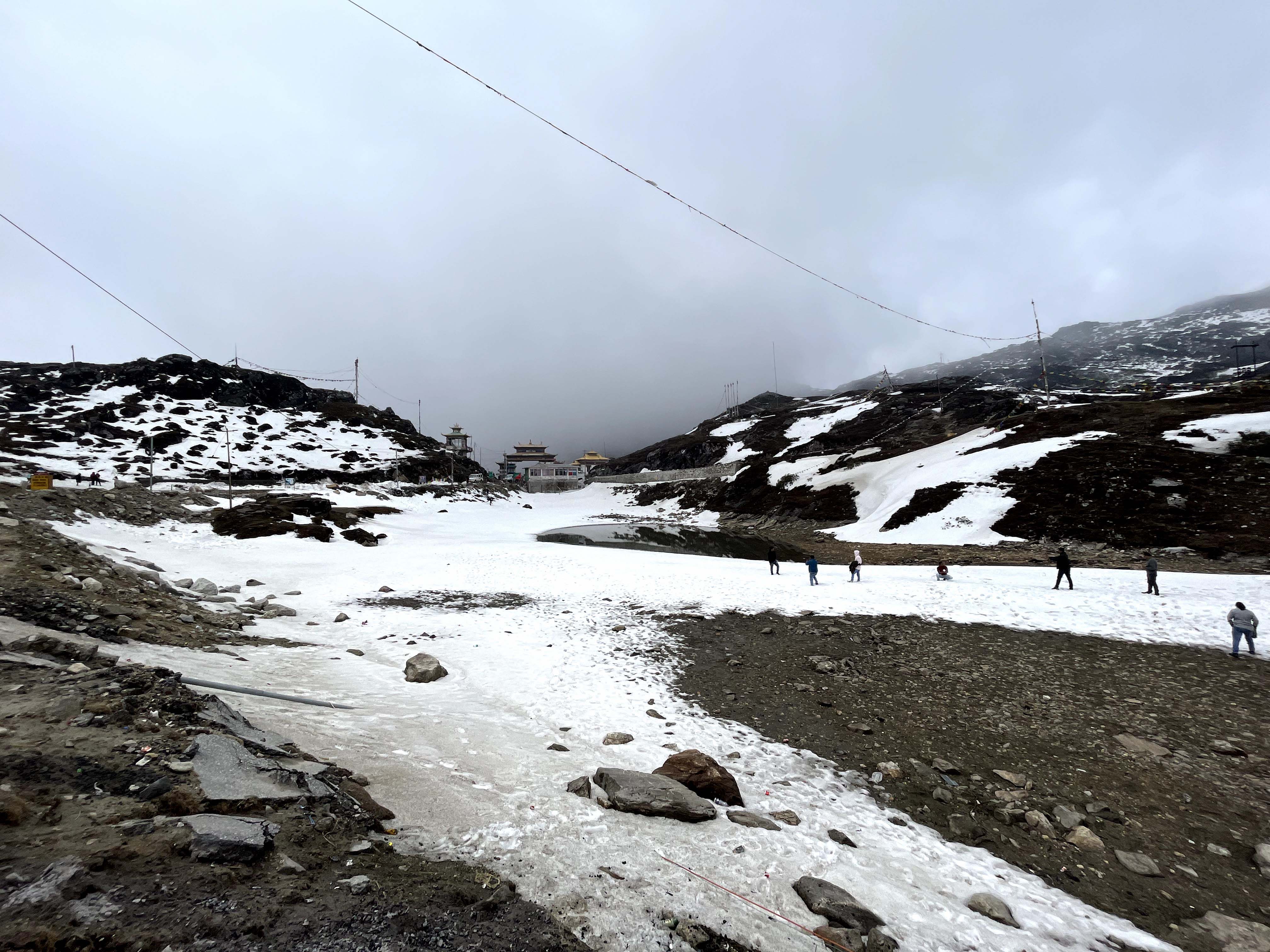
After having a meal of hot Maggi in the nearby shop, we tried our final luck around the army camp slopes where we saw a flock of gorgeous Snow Partridges and flying Himalayan Monals. We retired back to our hotel at Dirang by 3 PM, after an exhausting day and exciting memories.
Day 8
Mondruk Homestay was unlike our previous camp stays, having solid three storeyed apartment layout and spacious rooms. The owners made home cooked meal on top floor that is served on request.
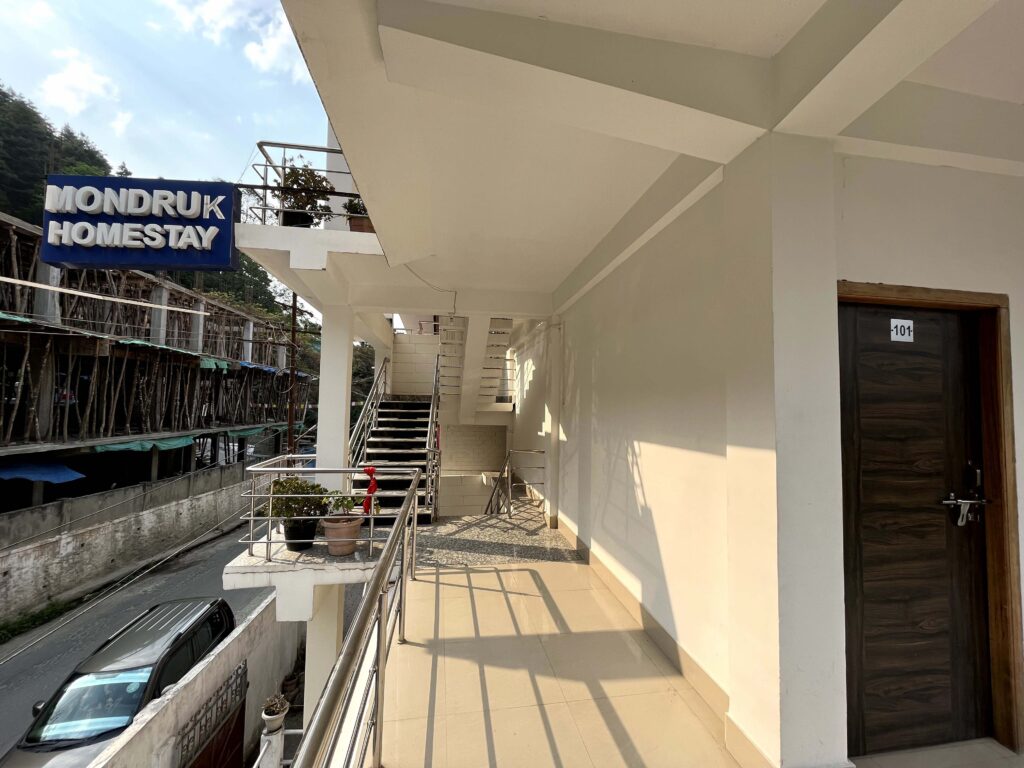
The bathroom especially had everything one needs, with on demand supply of geyser hot water.
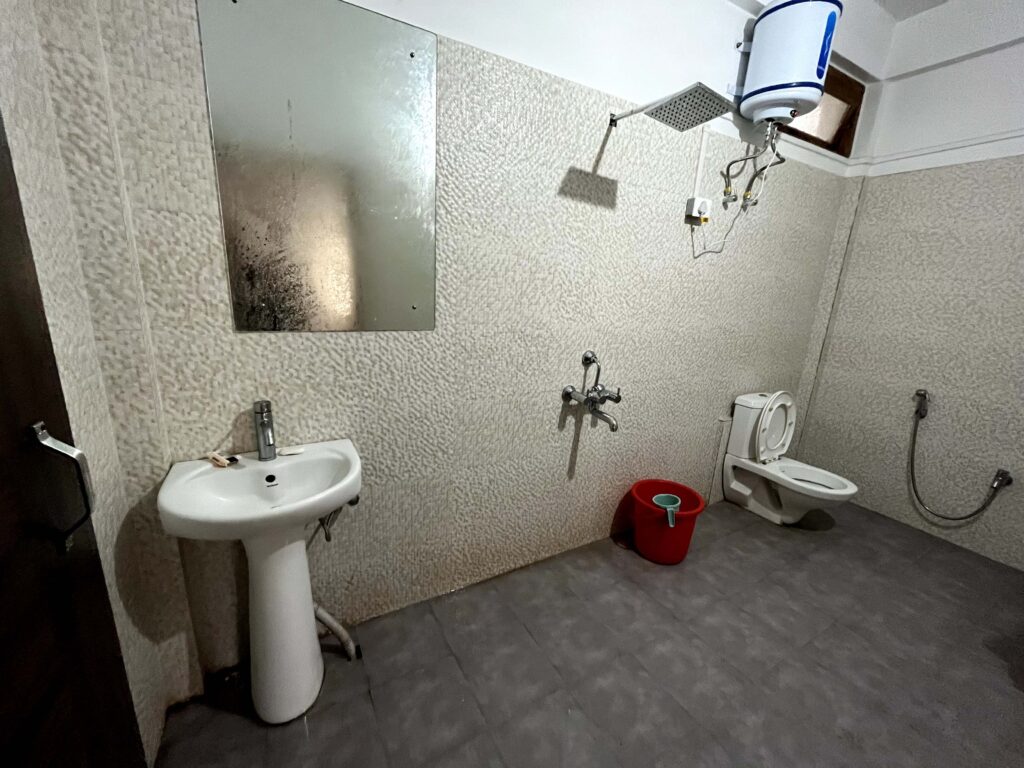
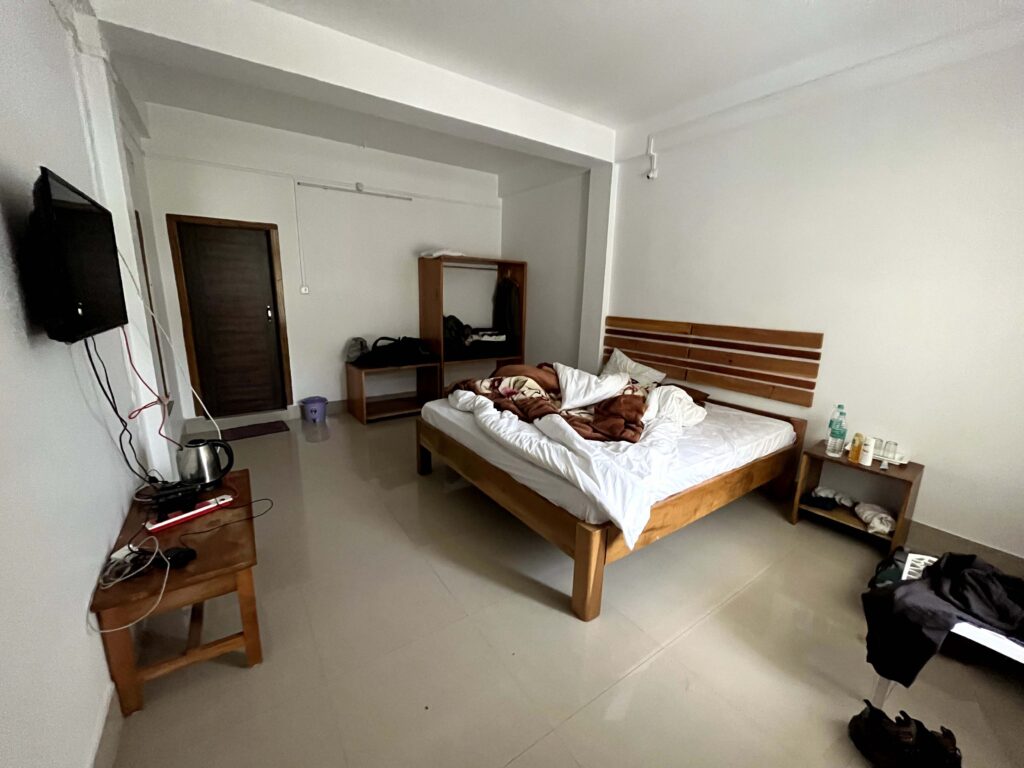
Due to the comfortable temperature of 15 degree here, the occasional power cuts did not bother us. We left the hotel at 5 AM to reach our next stop – Mandala. The central focal point of Mandala is the 108 Stupas with Sanskrit enchantment carved in each.
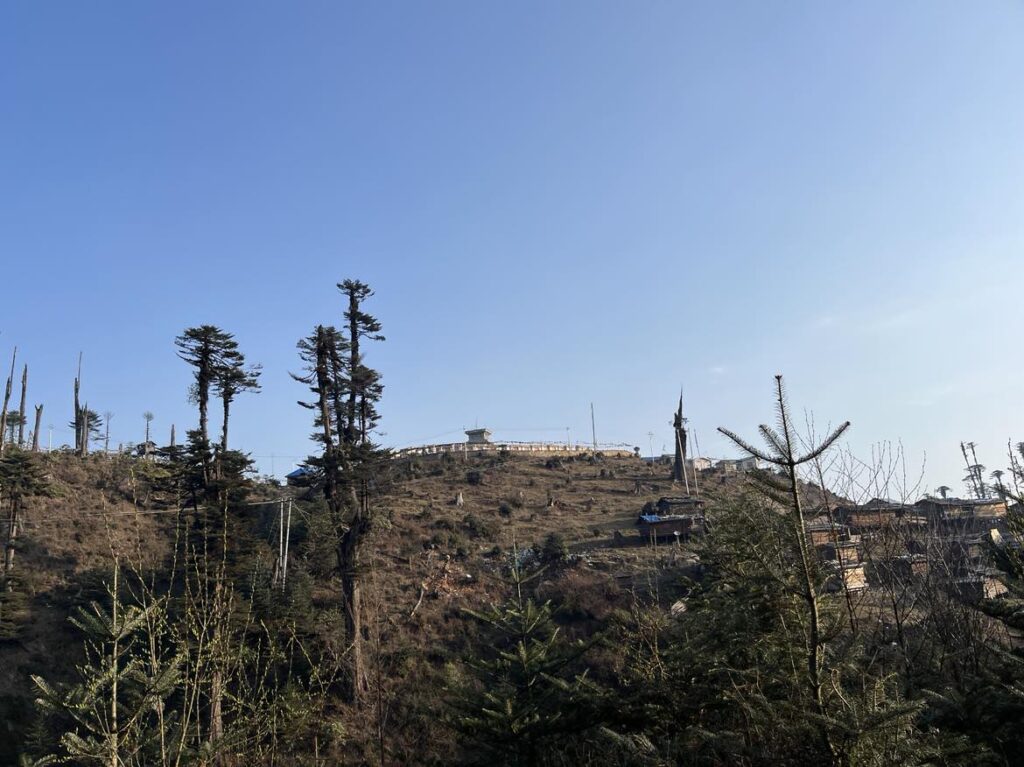
Crossing Phudung, the route forks as one prominent path leads to Mandala, which is situated at 11000 feet elevation.
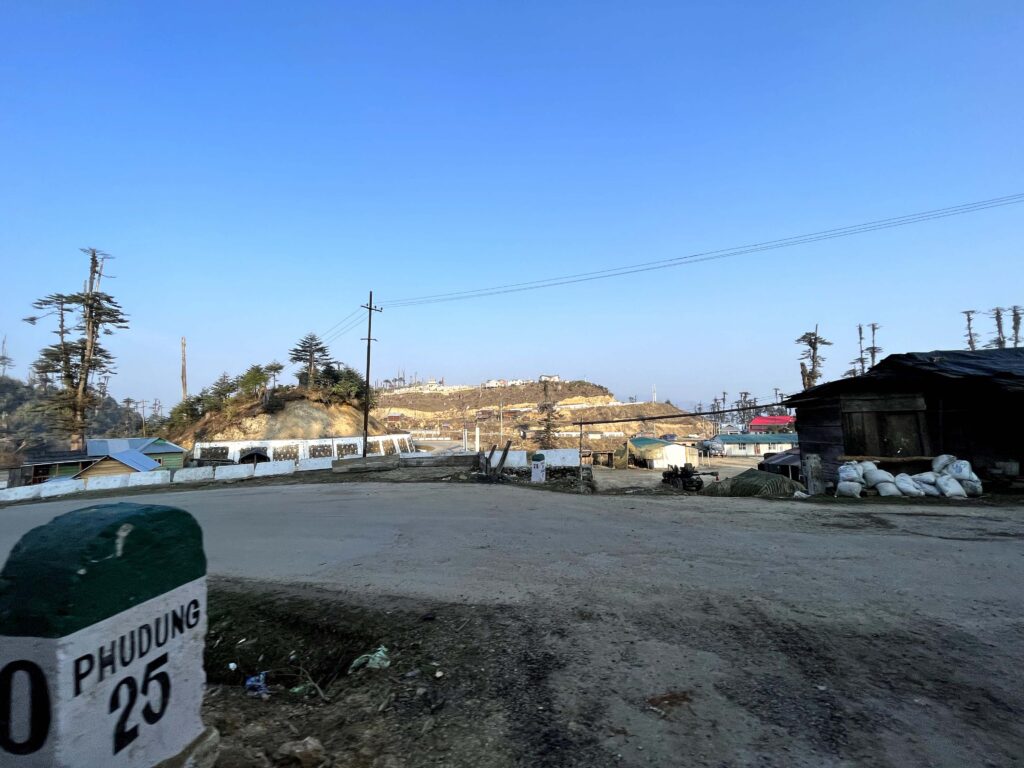
Mandala is known for it’s famous birding lodge, overlooking the gorge ahead. However lately, army training camps has spring up around it, leading to stronger noise all around. Village settlement is present all across the slopes.
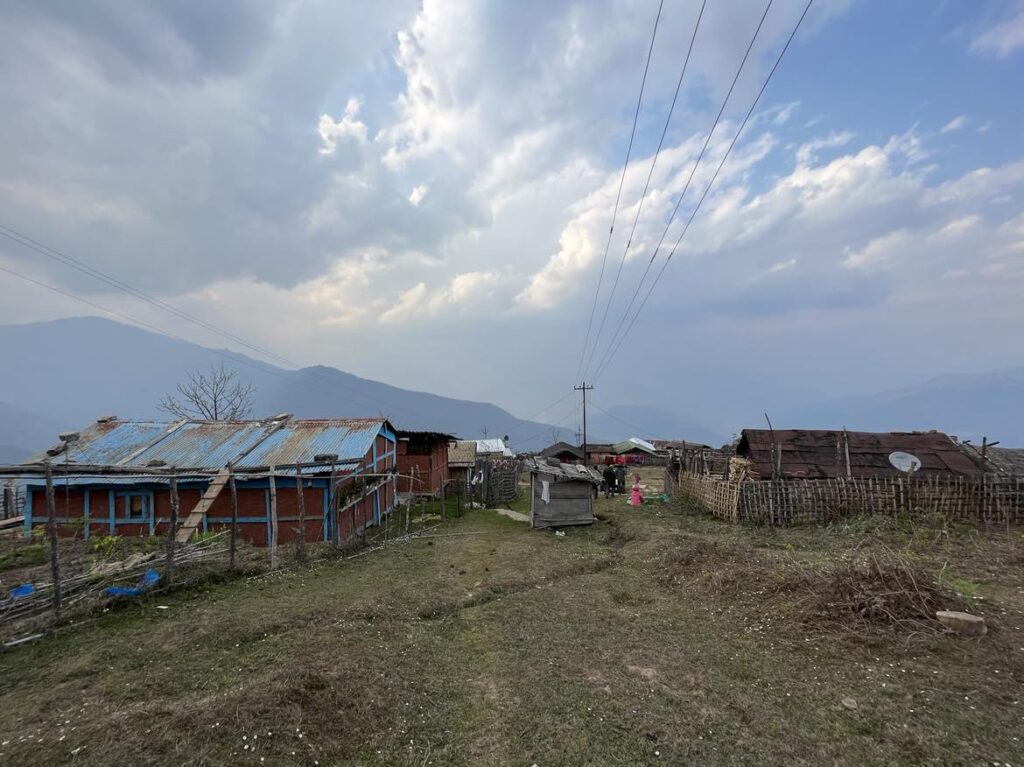
A typical view of Mandala locals is often of woodcutters wearing traditional garb or running hotels to serve the army and tourists.
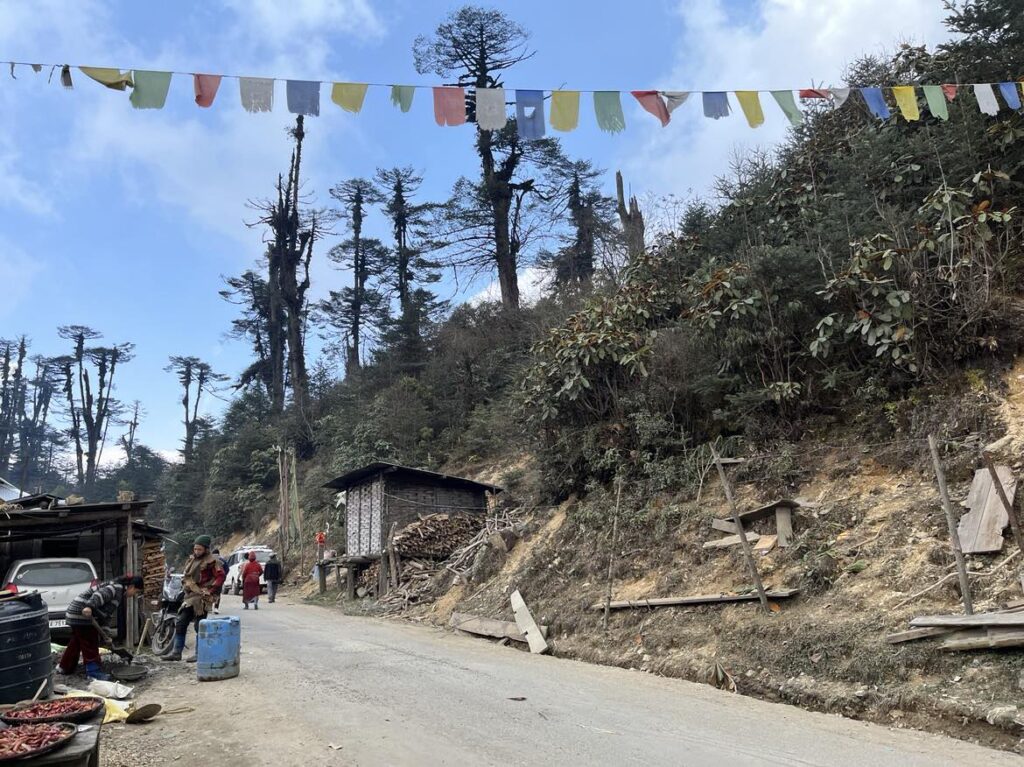
Walking down Mandala top, we passed through the nearby villages and experienced the act of farming fresh cabbage in large patches.
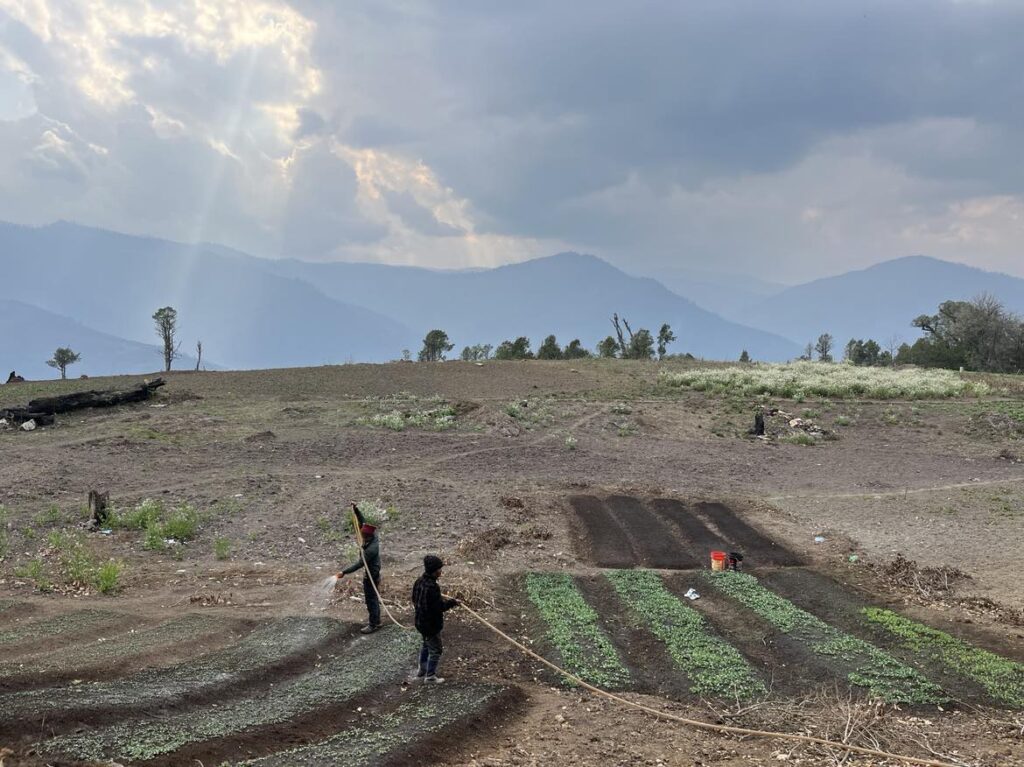
We ended our exploration at 4 PM, with our trip finally coming to close as we posed for some final photos and memories.
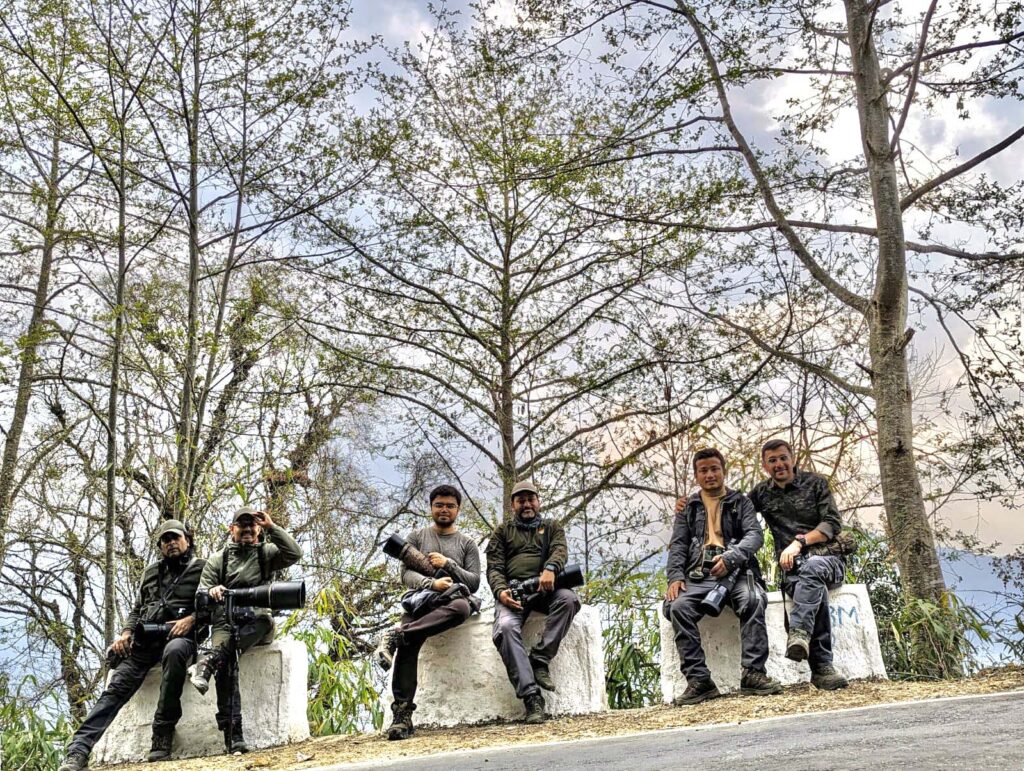
Day 9
We did one final lap on Eaglenest sanctuary to find Bugun Leochicla with a sharp deadline of 9 AM since some of us had flights to catch from Guwahati. At 9.05 AM, as we were moving back to our vehicle after mistaking some Red Faced Leochiclas for Bugun Leochicla. As we were moving back to the car with disappointment and promise to come back again, we froze on our tracks as another guide and his foreigner client around the entrance point signalled us for silence. He indicated spotting the bird in bush nearby.
In split second, there it was, on top of the branch, sitting like a typical laughingthrush in foliage and shadows.
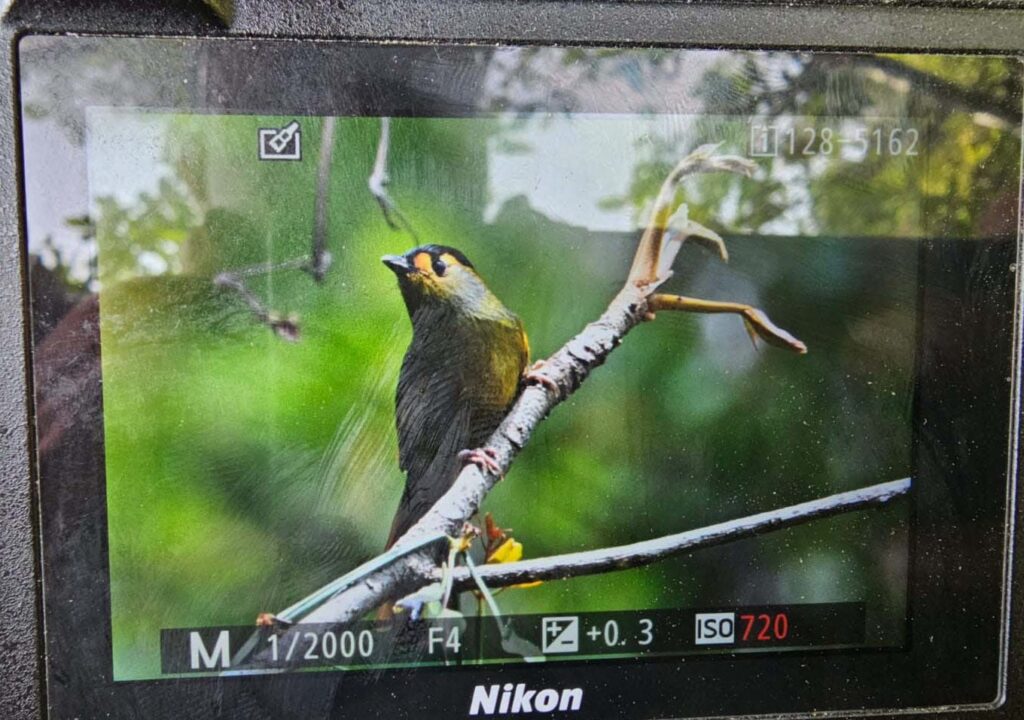
The joy of finally seeing it made my hand stoic as I could not believe my eyes. That was all the time it gave before diving back into the bush below. And then it dawned on us, there were 2 adults hopping around. Although I got an unusable shot from this attempt, my fellow camera owners aced the shot confirming what we saw, was indeed the elusive bird.
Nonetheless, the trip ended with all smiles and a final checklist of 180+ odd species. In my limited career of birding and checklist, this contributed a large chunk to my personal lifer count.
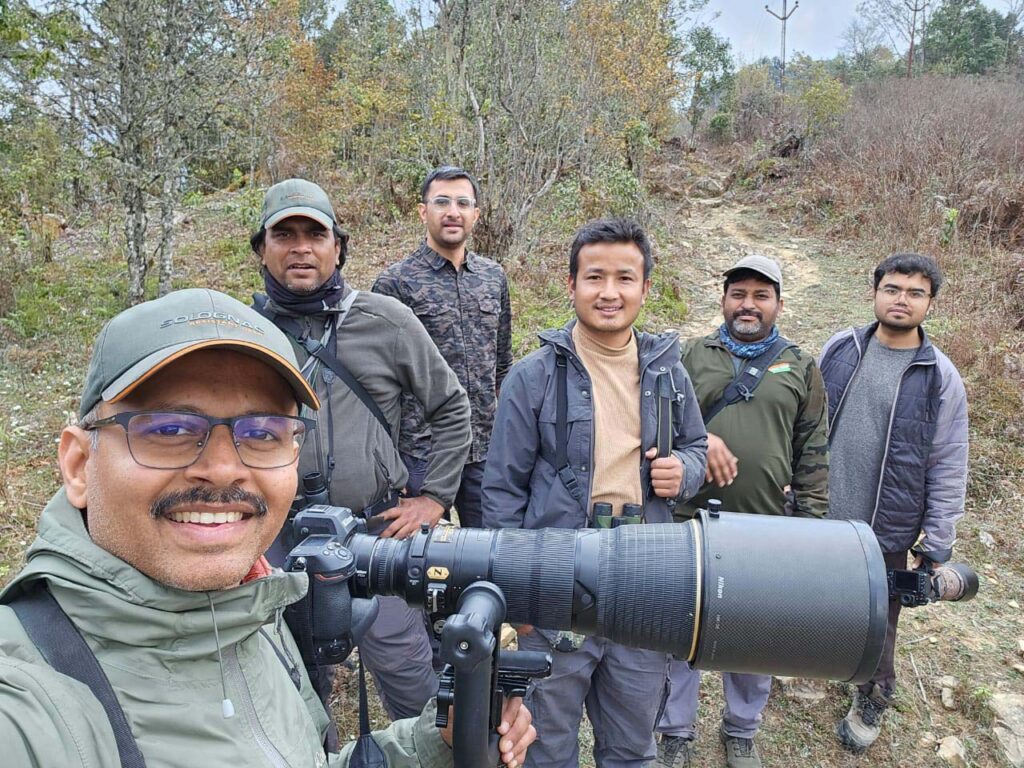
We drove to Tenga since one of the participants wanted to go ahead to Tawang to meet his family. For rest of us, post a quick breakfast, we drove down the long road down to Guwahati.
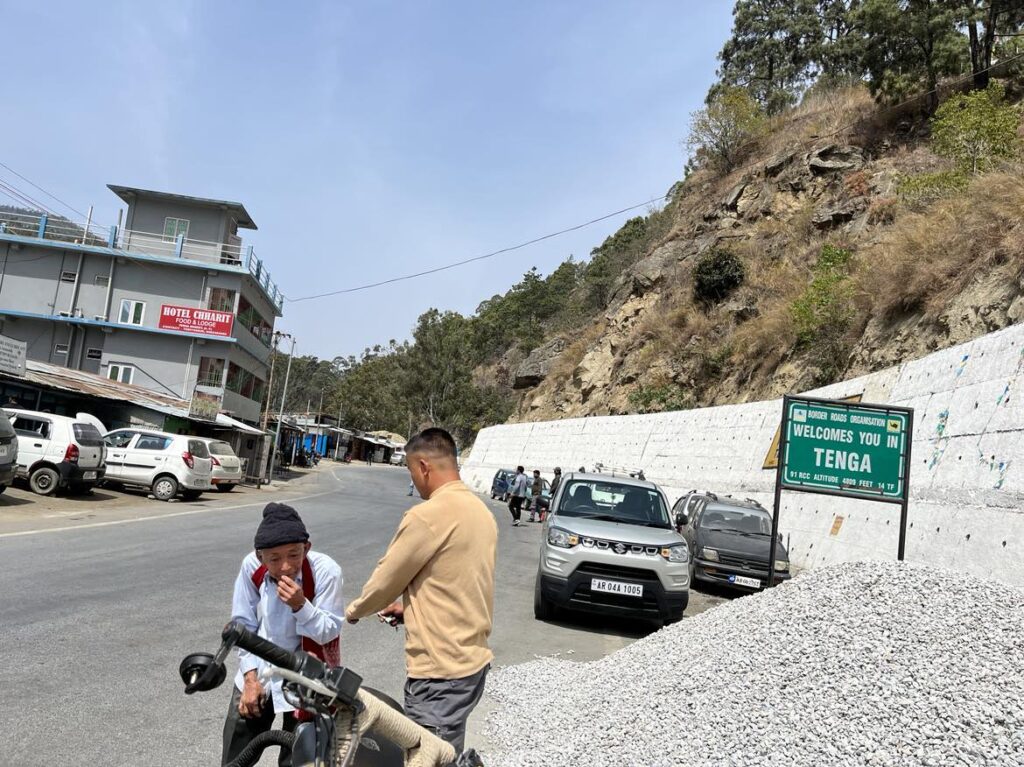
This time we did not take the Kaziranga route but instead went through a parallel route, through the state highway of Assam villages. The day was Bihu (celebration towards first harvest) as we saw countless celebrations on the way.
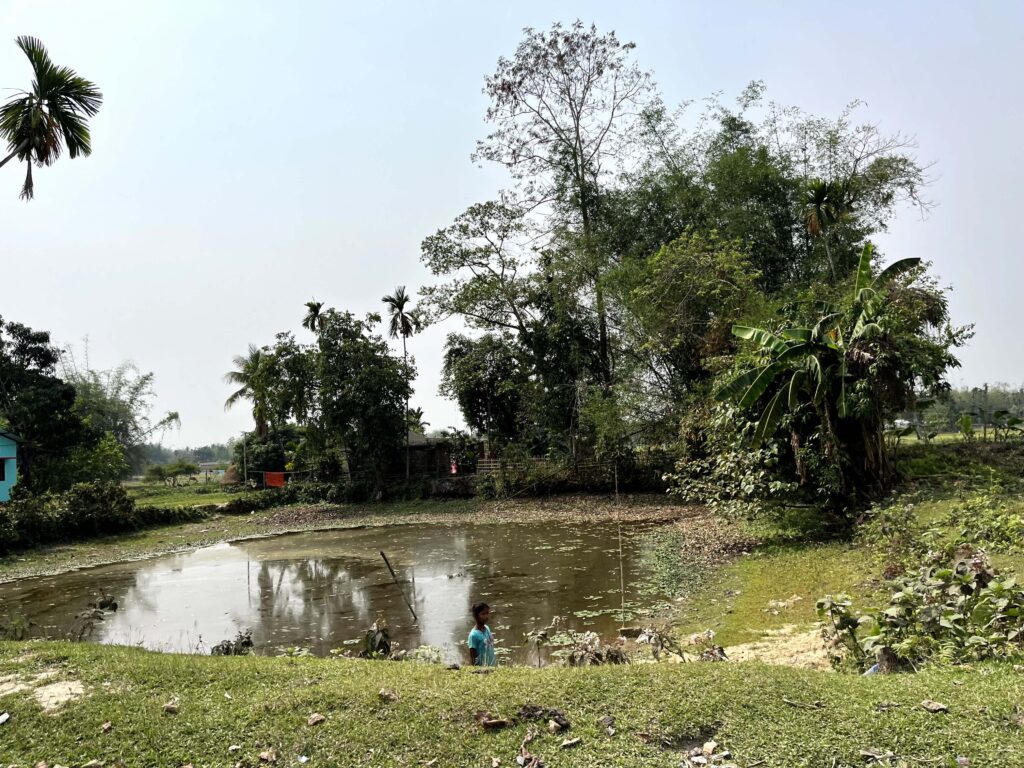
Our quick stop for lunch was Amal Dhaba restaurant, which was one of the poorer food fares in this journey. But unfortunately, with the next town being quite afar, we had to make do with whatever we got.
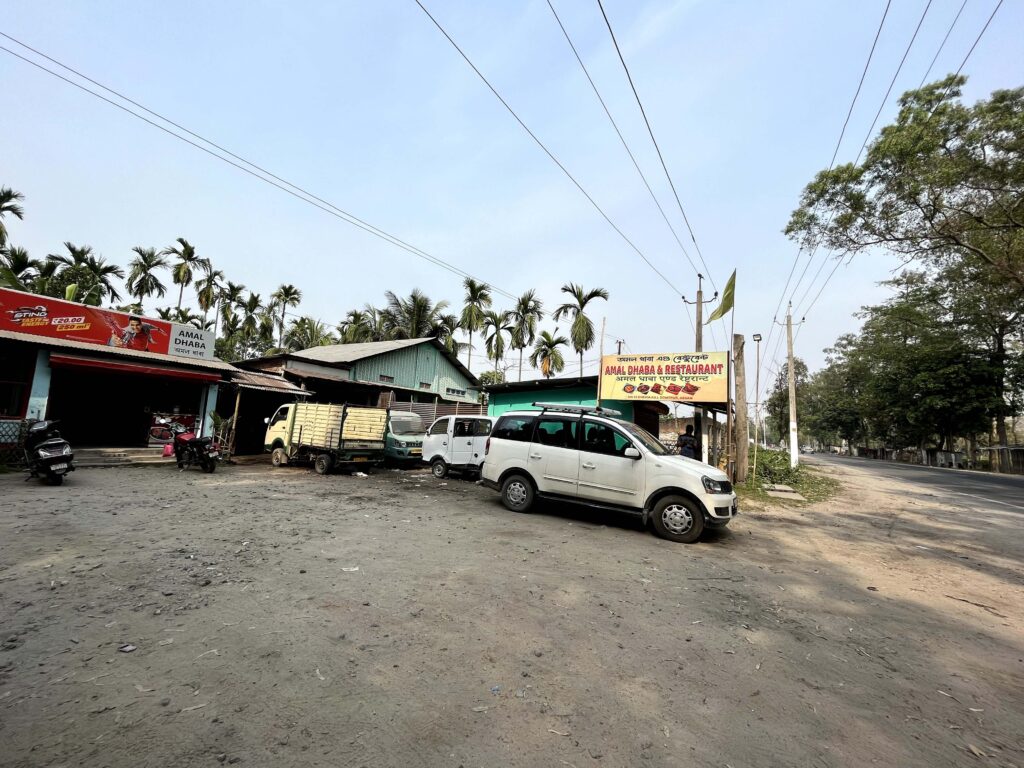
We finally reached Guwahati airport at 6 PM. As others went for airport, I checked back to Hotel Mirana for rest since my flight was due the next evening.
Day 10
After an amazing sleep, fulfilling dinner and hearty breakfast, I walked back in the 38 degree noon to the airport gate, which is roughly 870m away (as my hotel receptionist precisely told me). Guwahati airport is small but modern with Bihu celebrations happening in and around the premises.
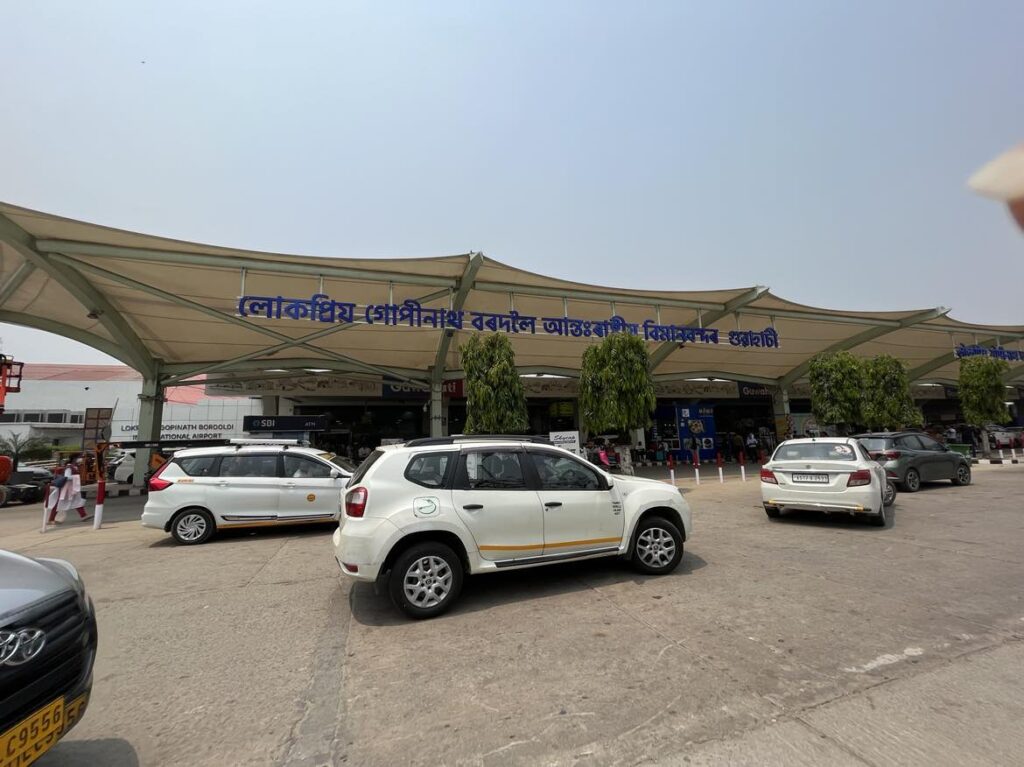
Here I got to know that the Guwahati airport offers helicopter services to Arunachal as well.
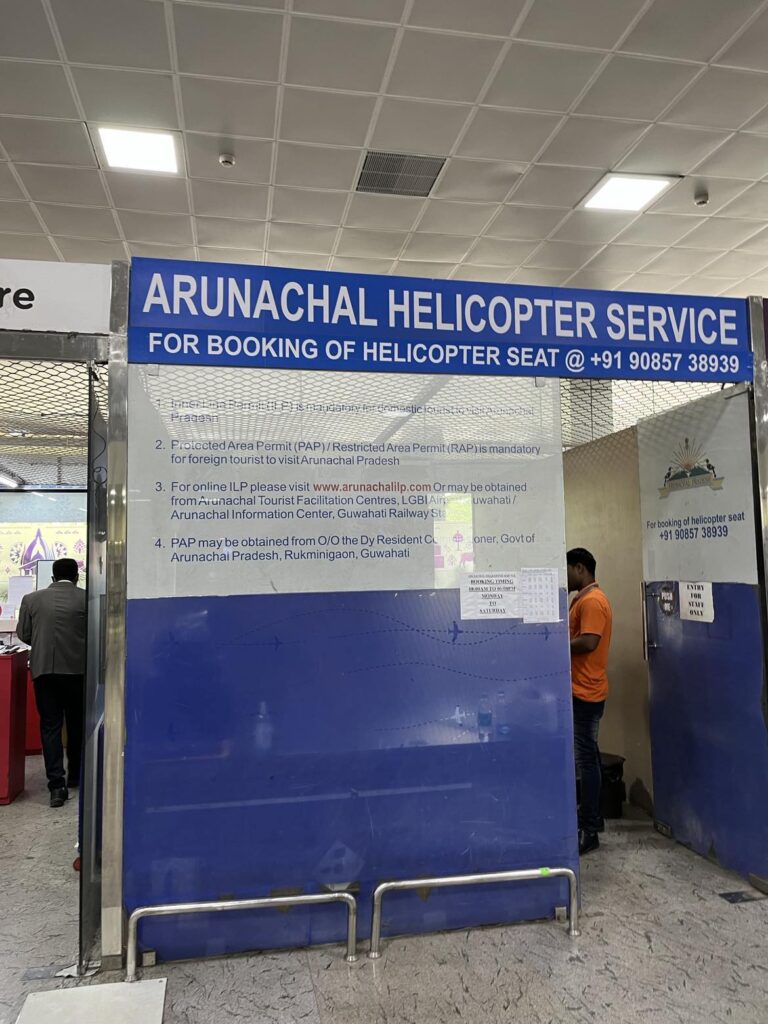
The lounge is very small but they had Bihu celebration meal in the menu. The items were very close to a typical Bengali Fish-Chicken-Paneer platter with largely similar taste.
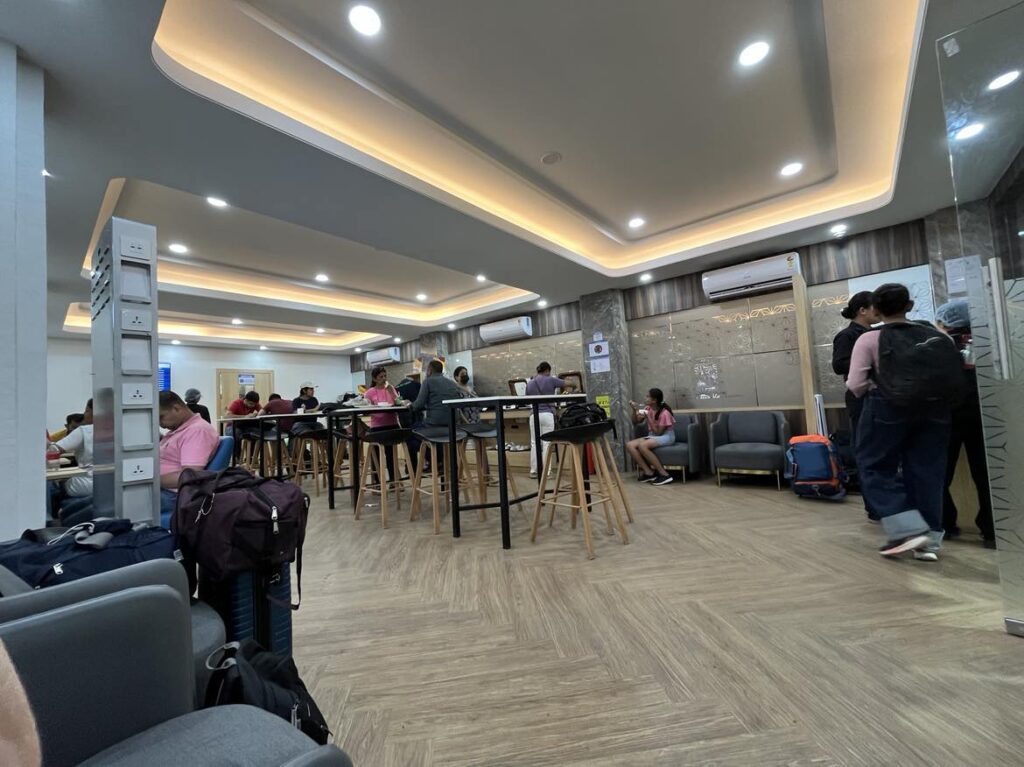
My trip ended with an on-time Air India flight back to Kolkata which landed at 4.30 PM. The week exhausted me by the end as I was greeted with 42 degree Kolkata heat.
Tip Offs
Carry layers of clothing for different temperature and terrain. A fleece light jacket, a heavy jacket to deal with frozen temperature, rain proof jacket, inner thermals, gloves and good hiking shoes, plenty of socks, ear and head protection, nose protection – everything you can think of is a must. There will be mornings where you will be walking in a t-shirt and there will nights when you have everything layered up.
Anti leech socks is an essential, especially when it rains. Same goes for medicine as we often had to consume boiled rain water since we were out of packaged water or had been bitten by bugs.
Get your permits in place since entry into Arunachal needs the same. Make sure your Aadhar is available everywhere.
Everyone typically speaks Hindi, so language and communication will be least of problems here. People are largely helpful and nice.
For staying in camps, carry torch everywhere. The waters can be frozen cold to the point everything can feel numb and light source is powered by solar energy in the morning. The common areas used for charging had electricity for limited 3-4 hours every night. Food may not be readily available, but they provide packed good quality food. In certain camps there is common toilet or no facility of tap water, so you may have to ask folks to heat water in bucket and use the same.
If you are into astro-based observations, the night sky of Arunachal is one of the clearest you can see with little to no pollution.
You need a certain level of basic fitness to have a smooth run in Arunachal. Conditions can be extreme that needs lot of walking and hiking, so a mental preparation for the same helps.
Recommendations
The true recommendation of Kameng is none other than Bugun Leochicla due to it’s historical, biological and conservational importance. However I will recommend staying in one camp rather to experience the true wilderness. Here is a video of Bompu camp since the cold is the easier to deal with here, compared to Lama. There are more tents here as well.
Freezing out
Sayantan